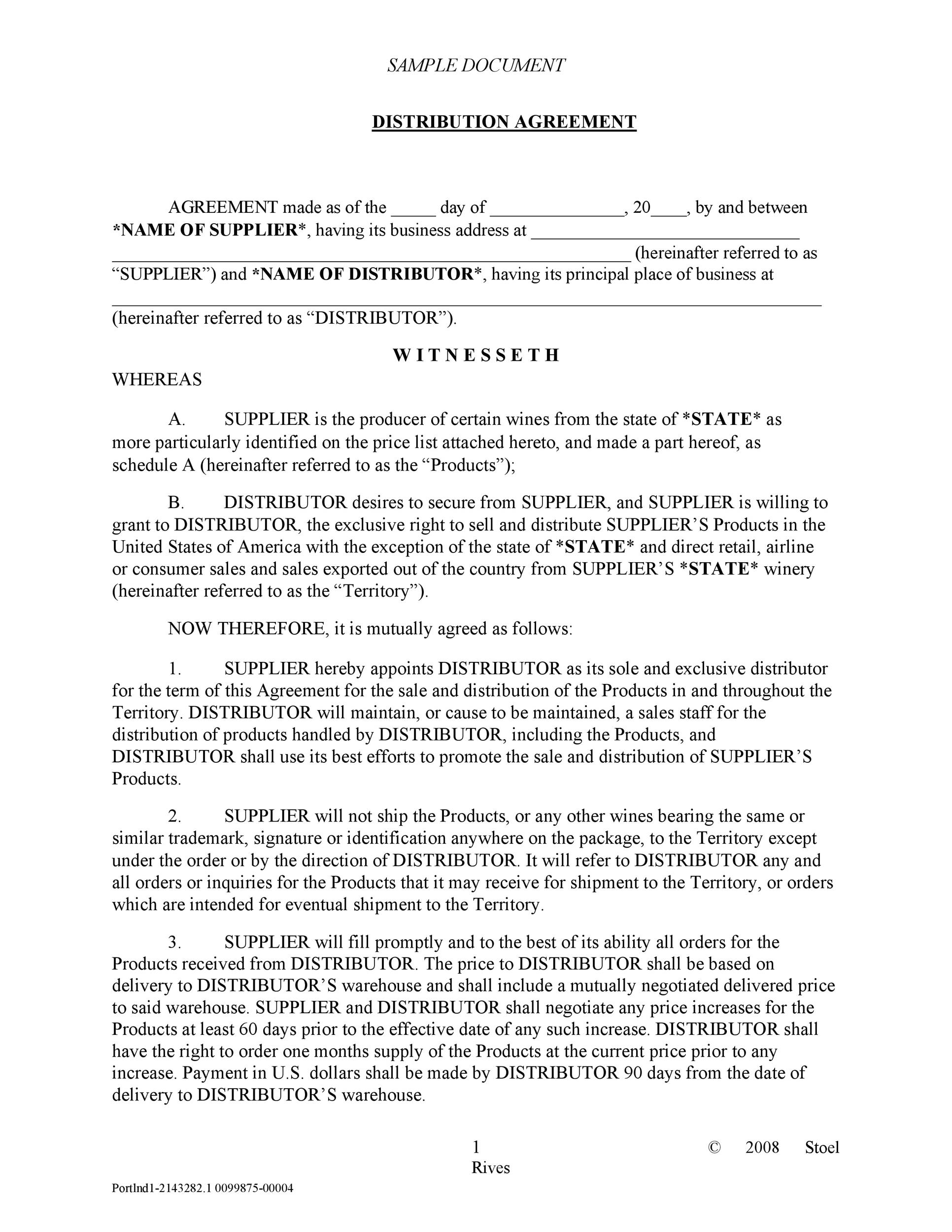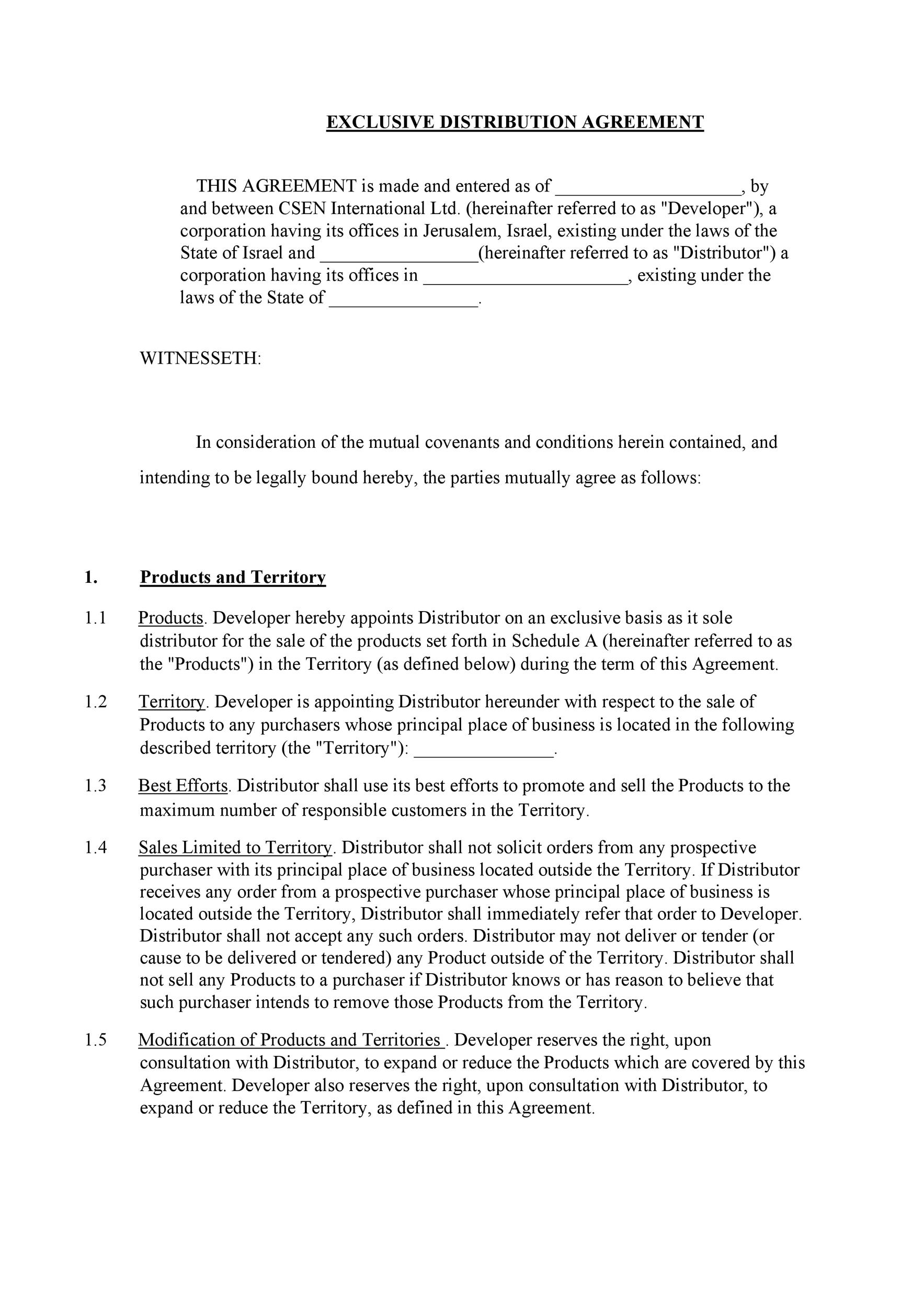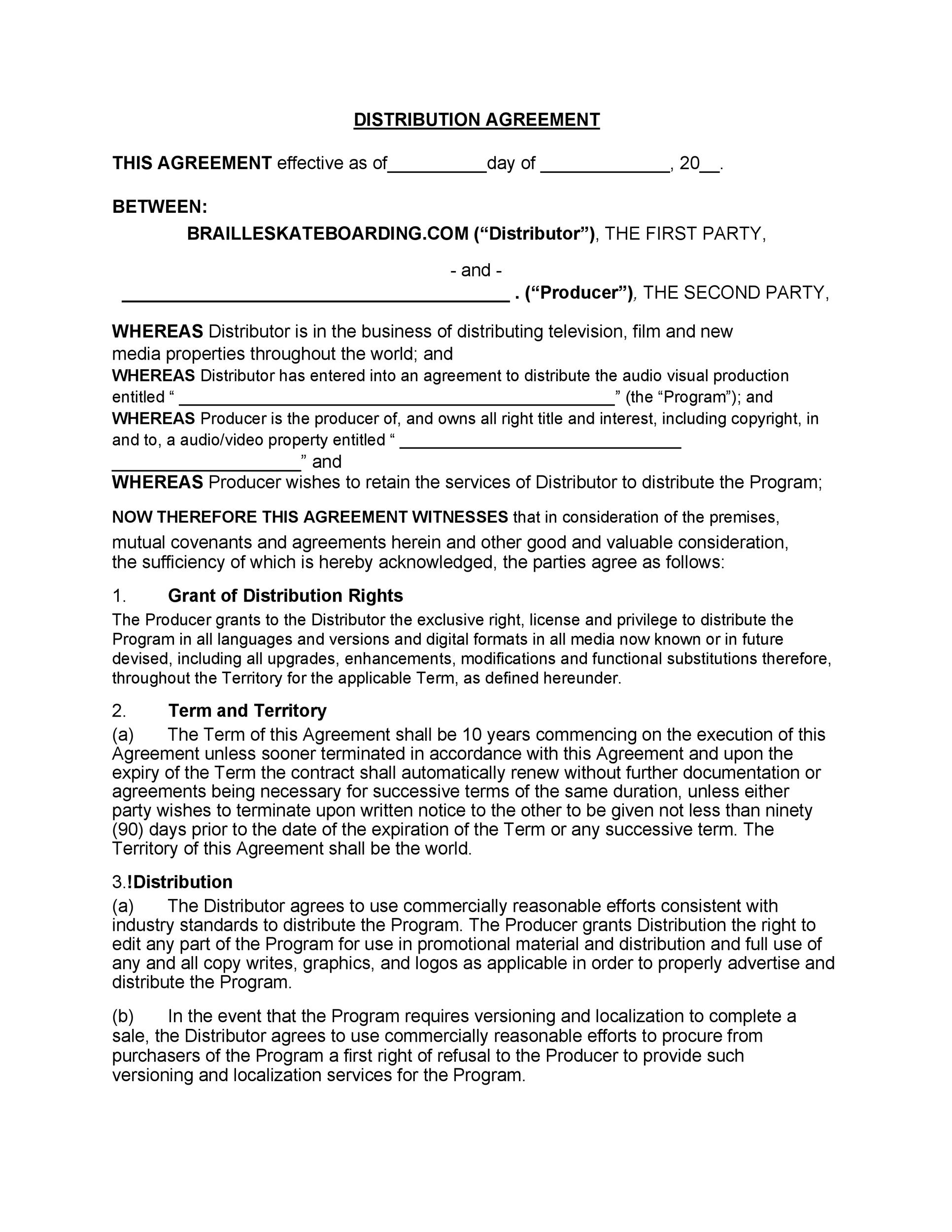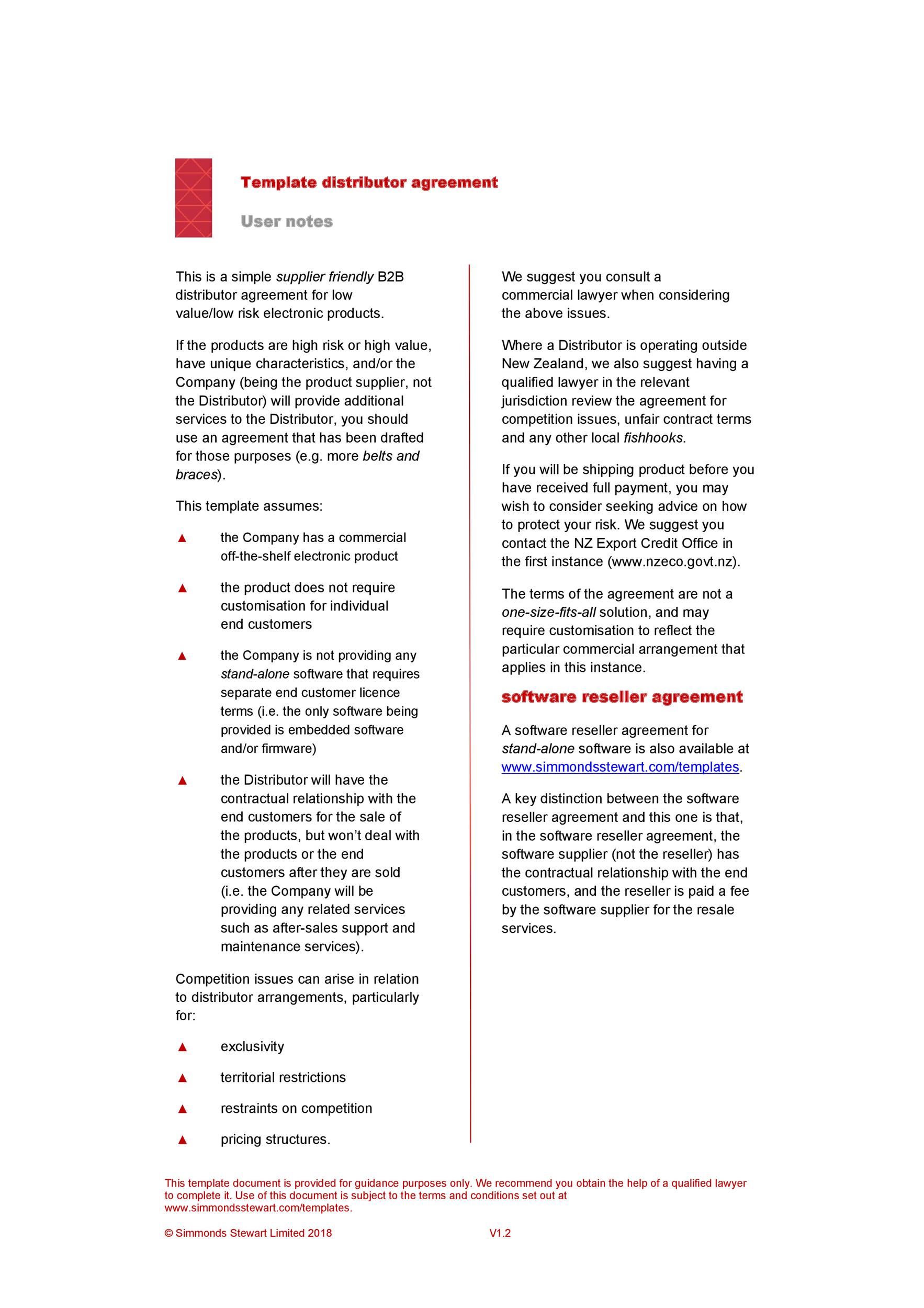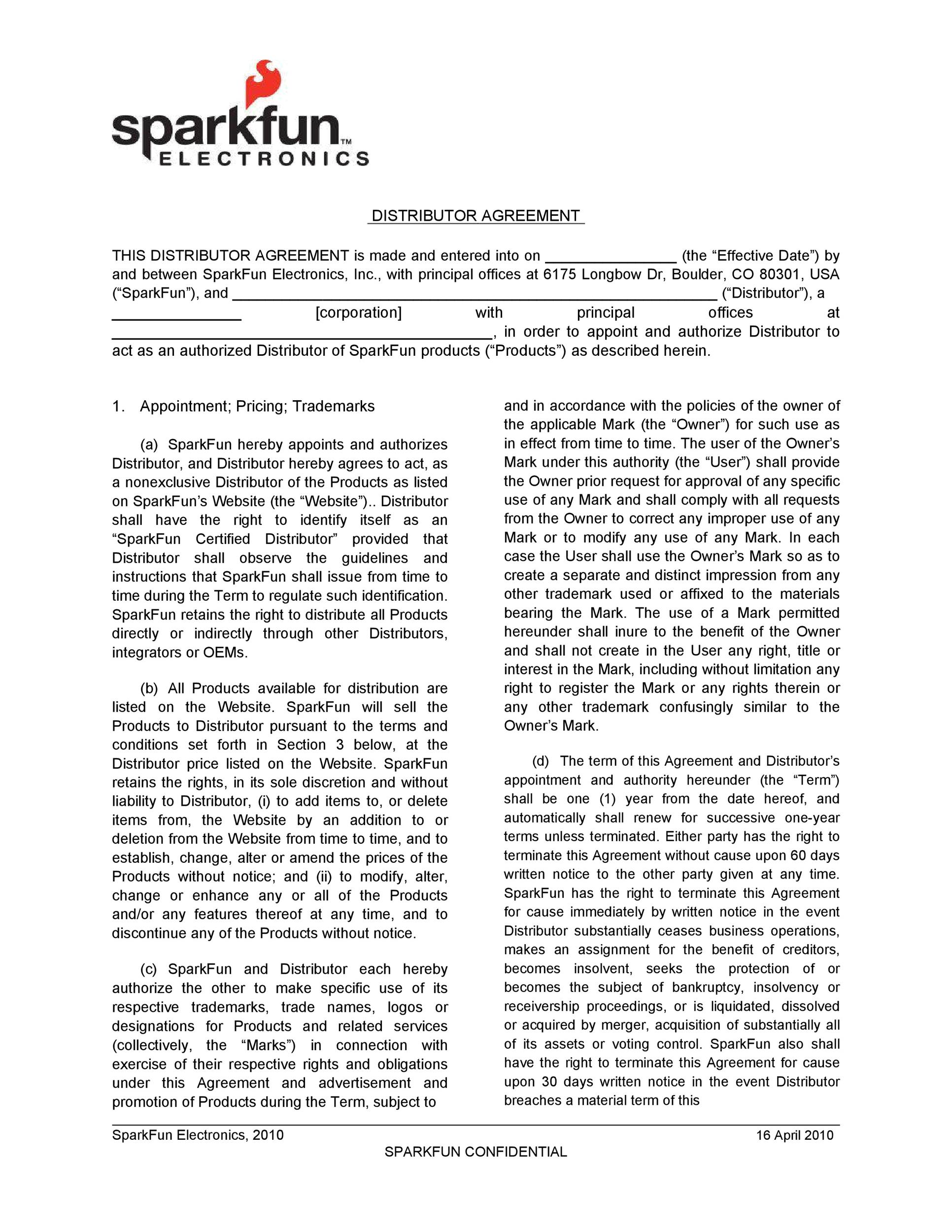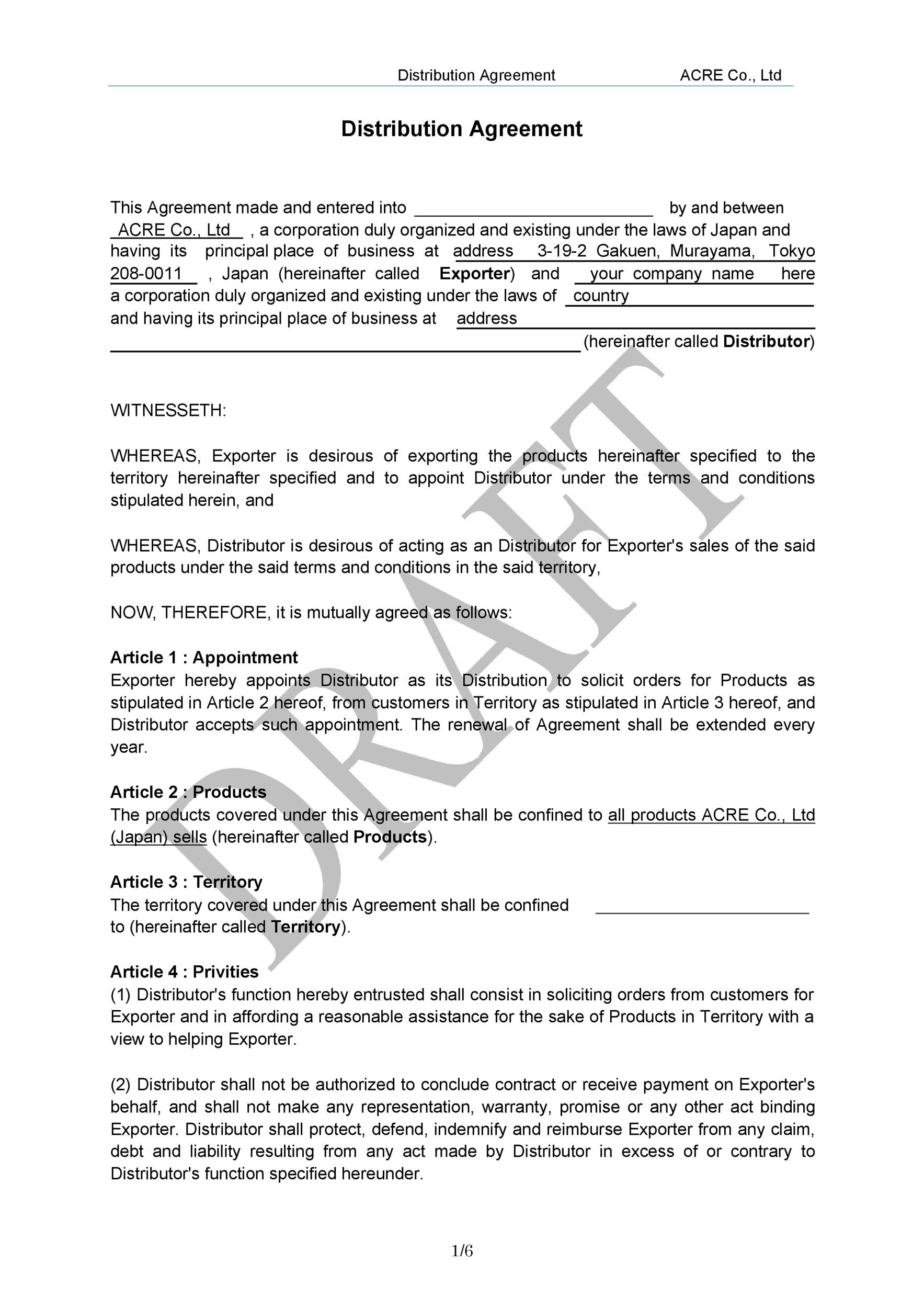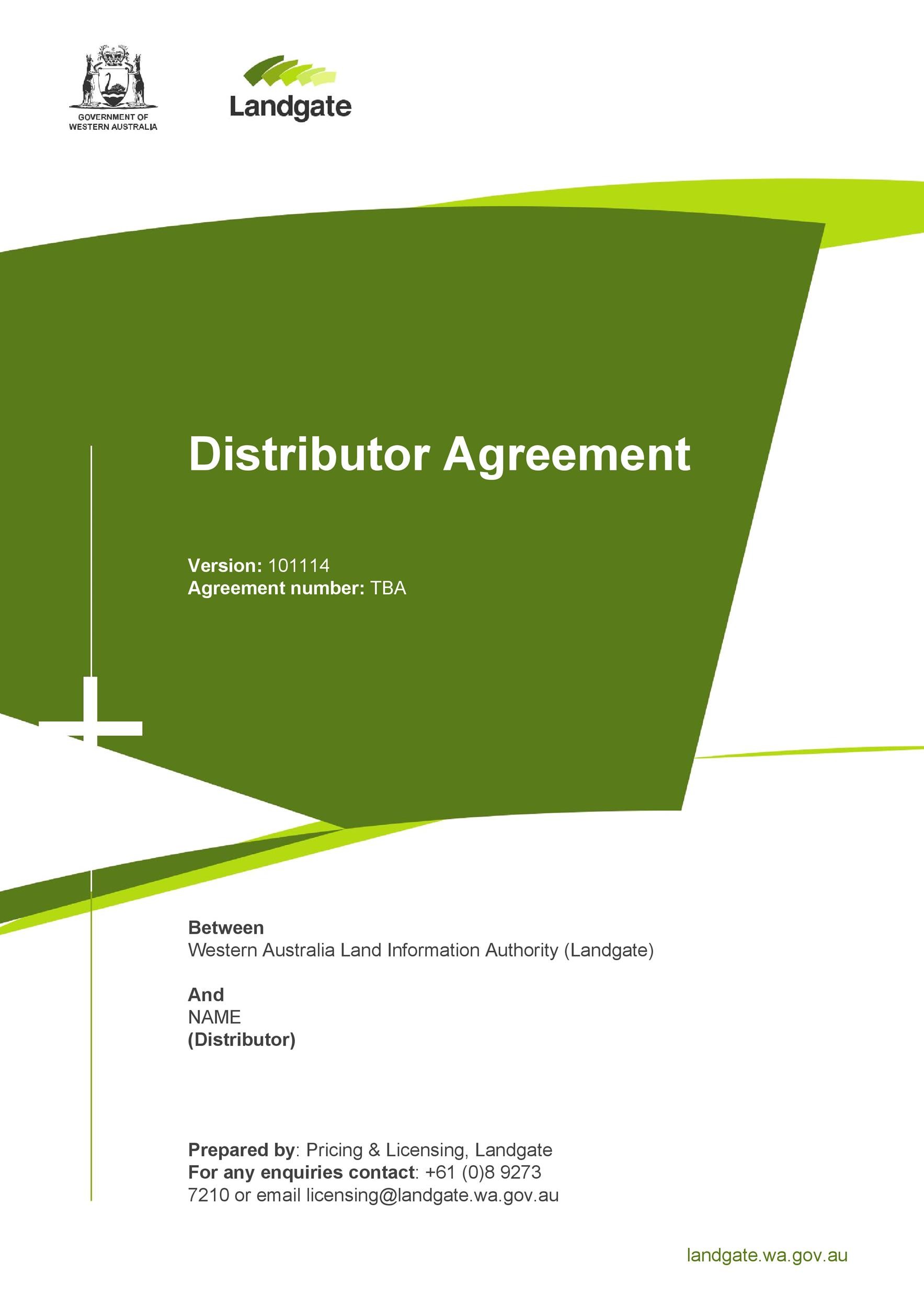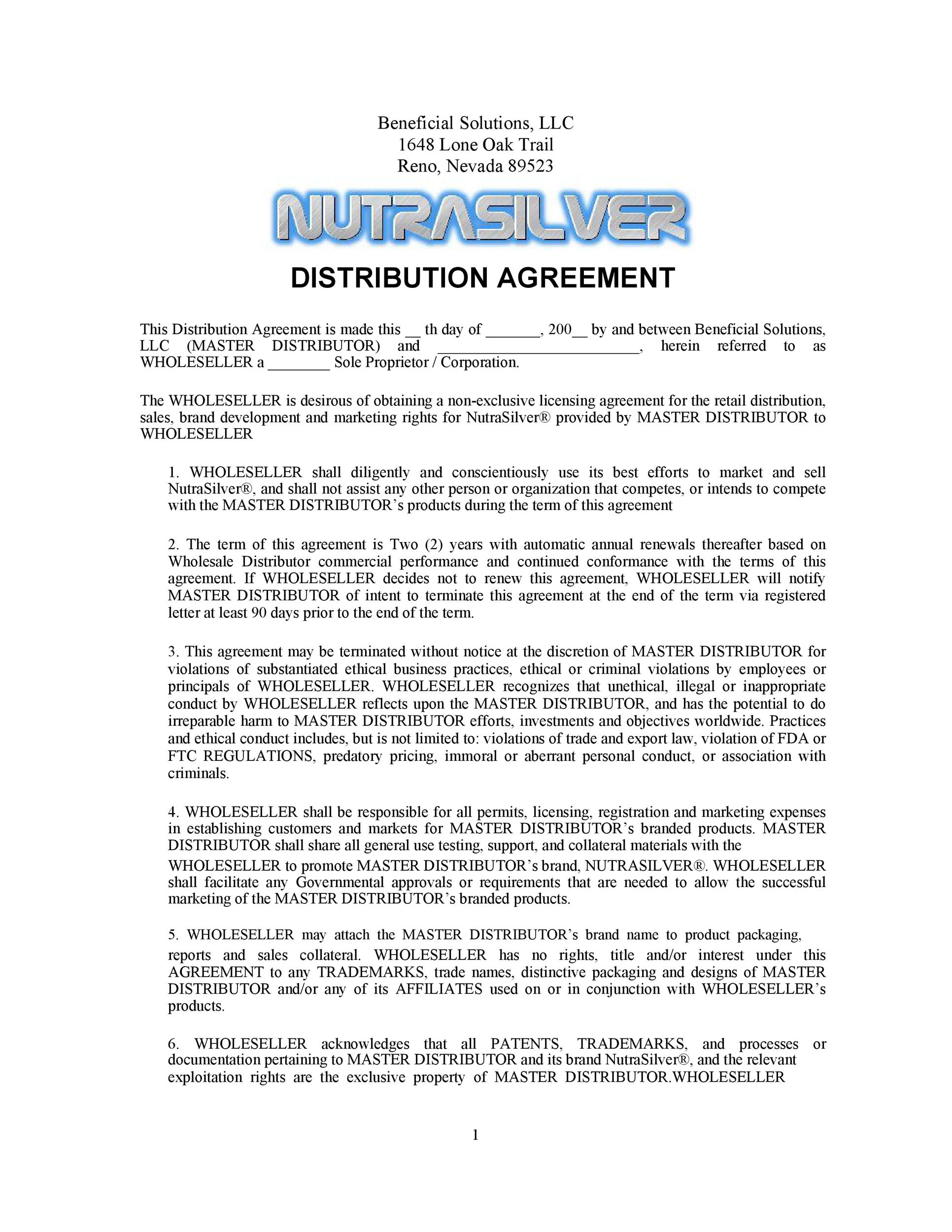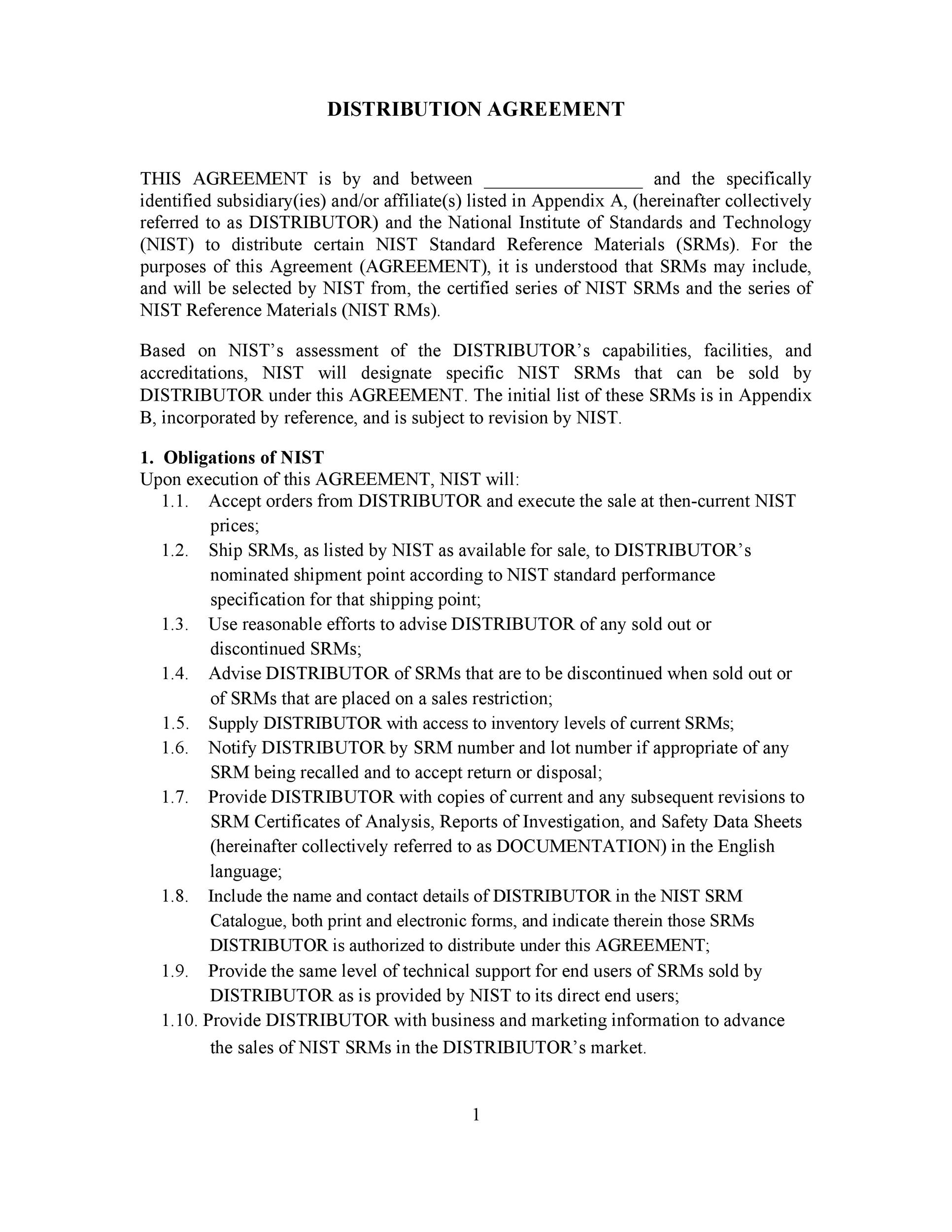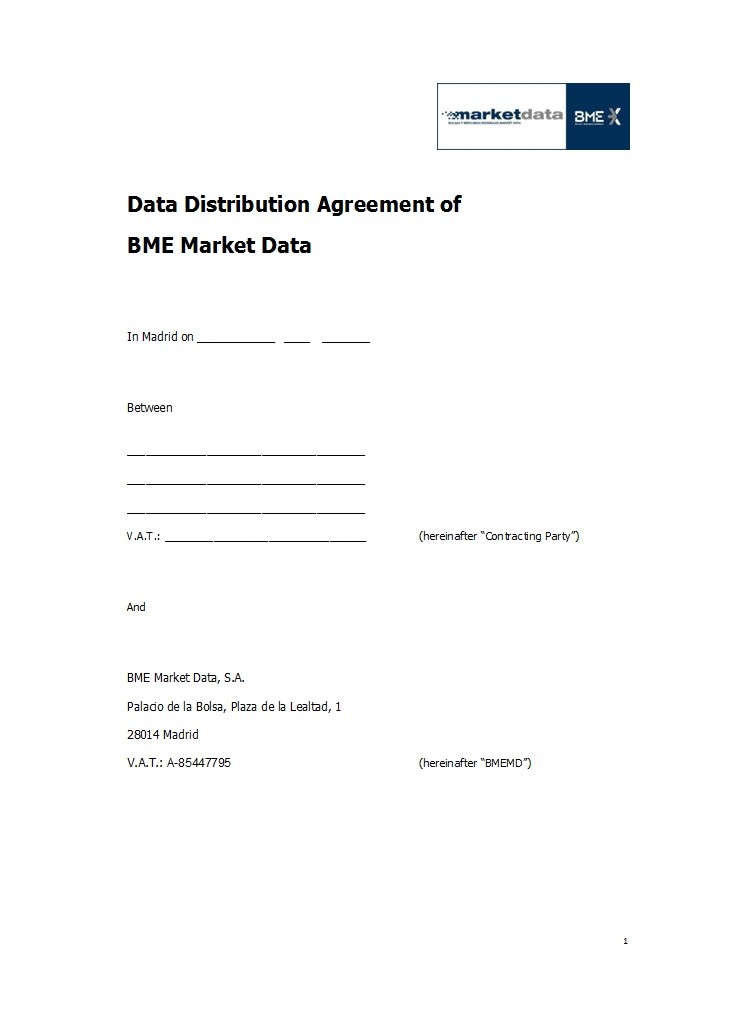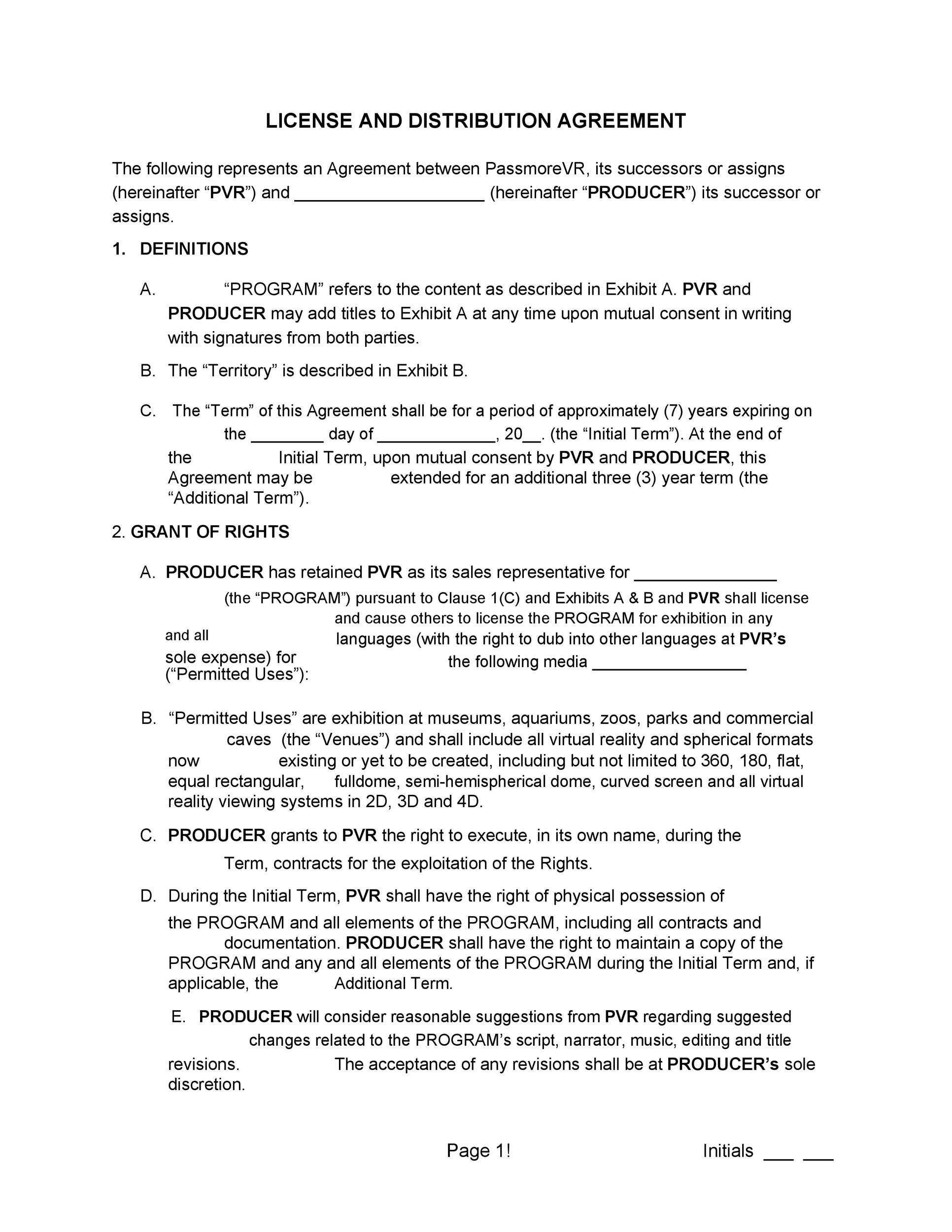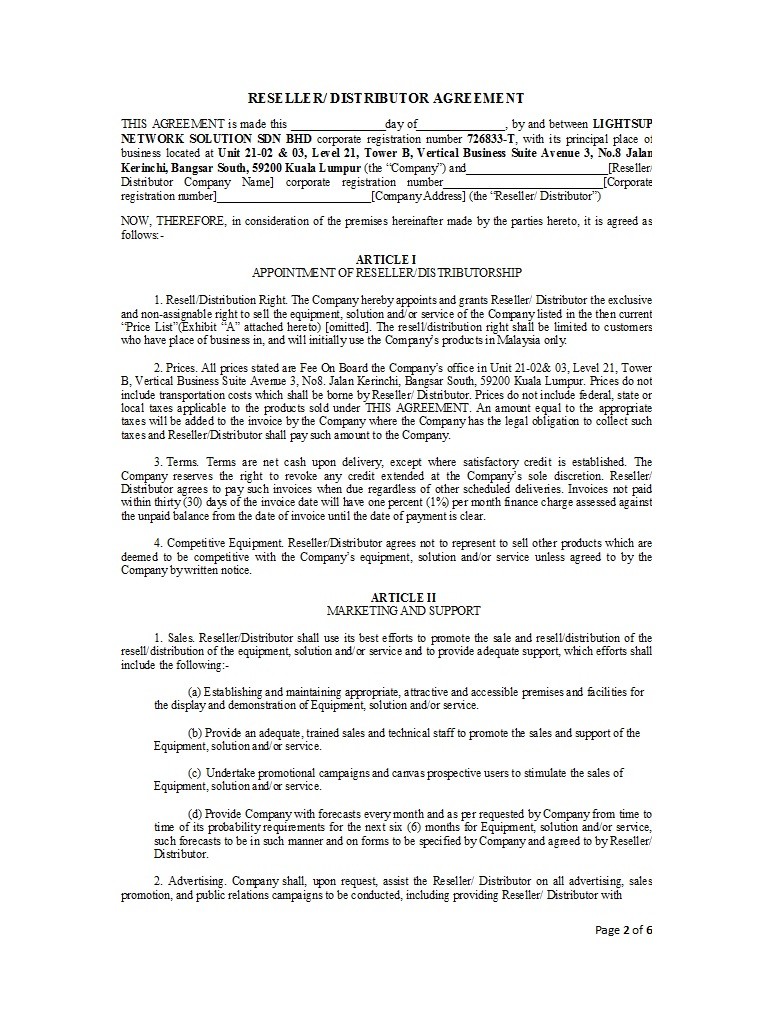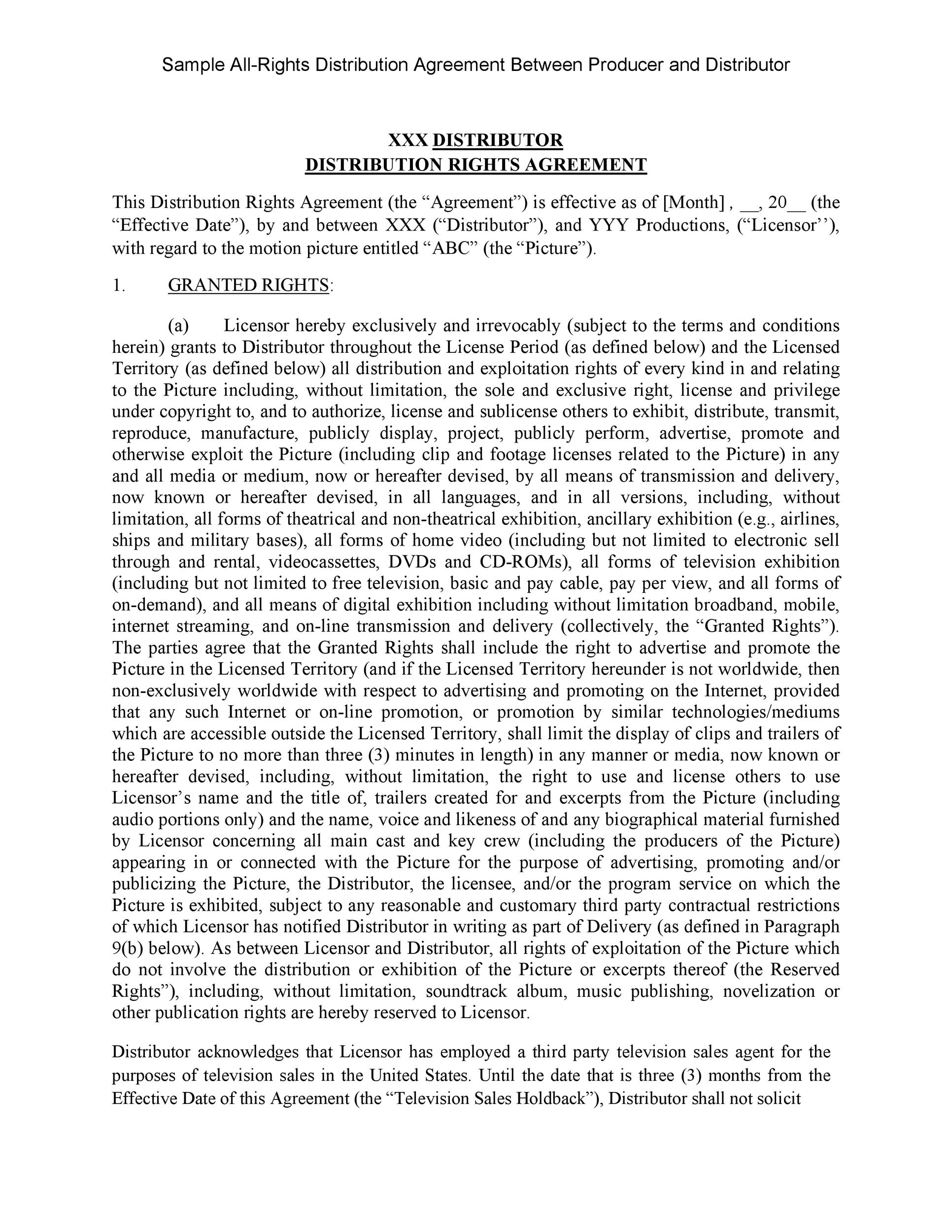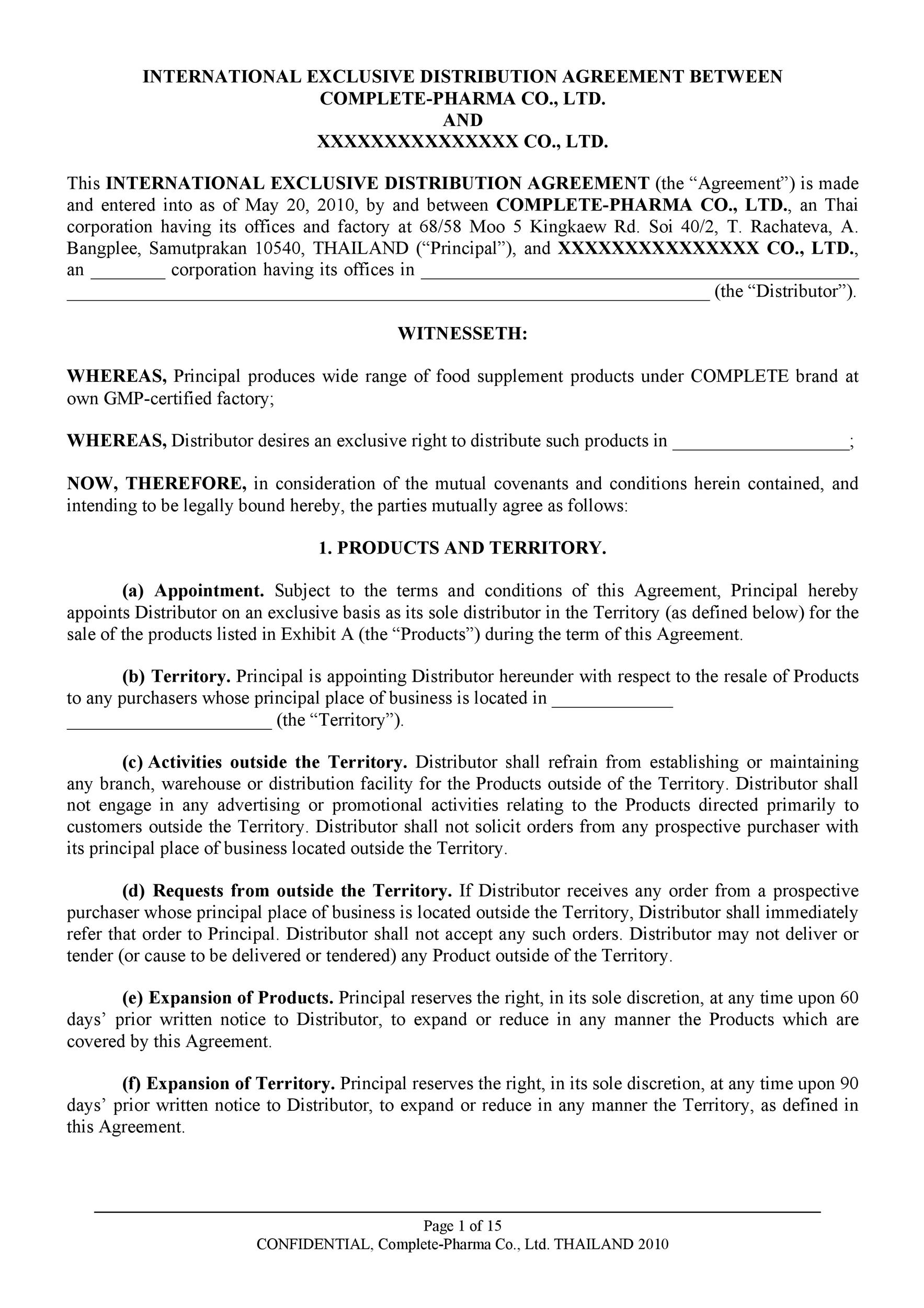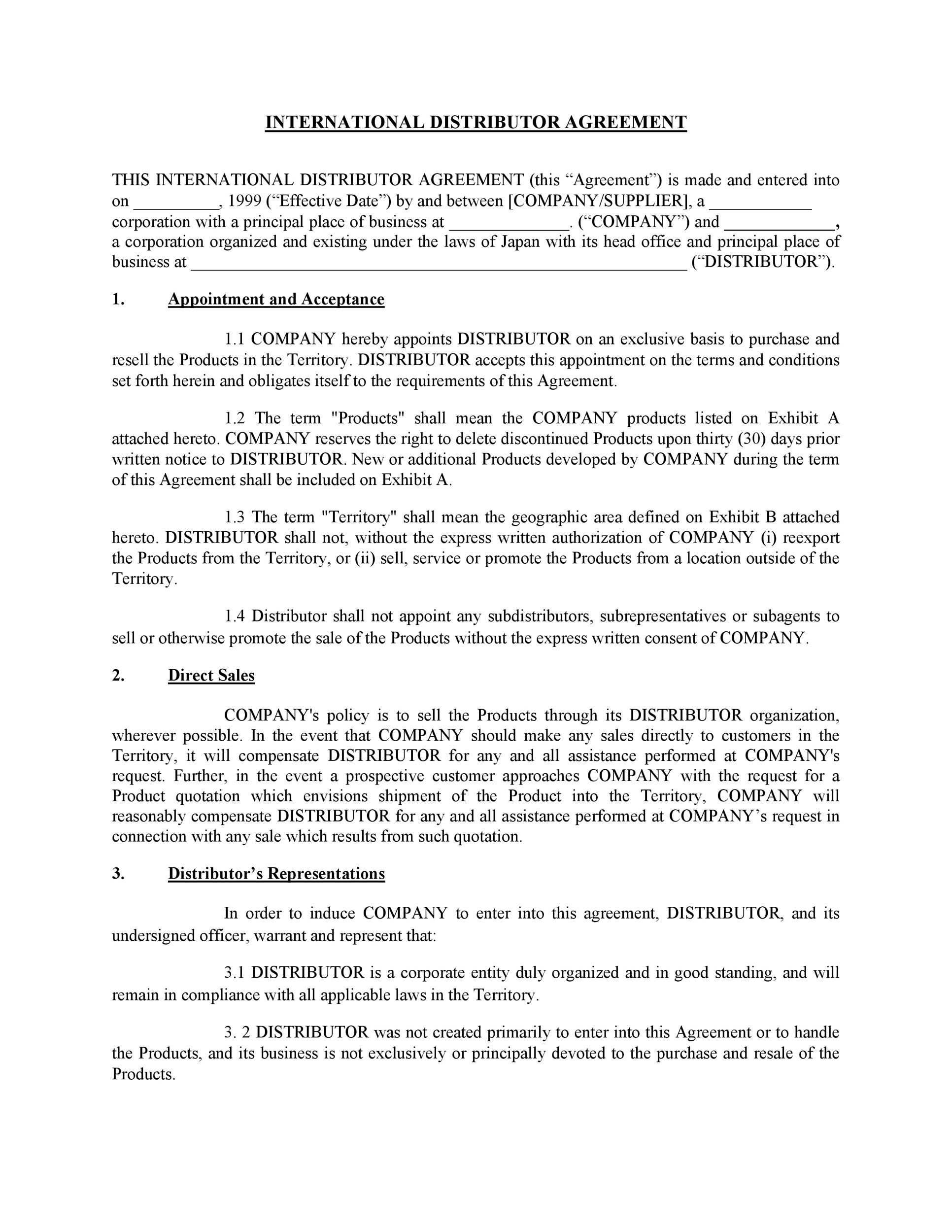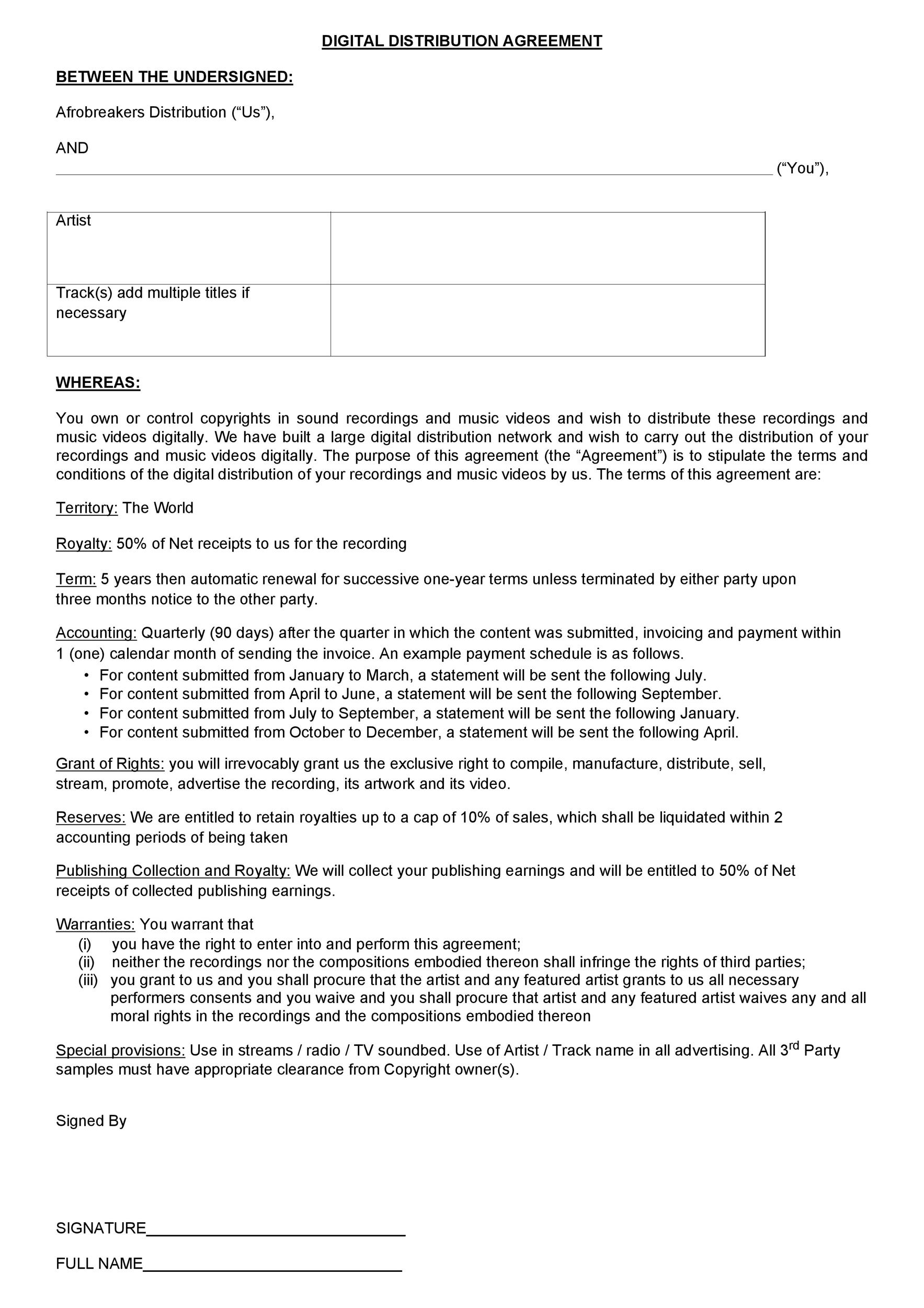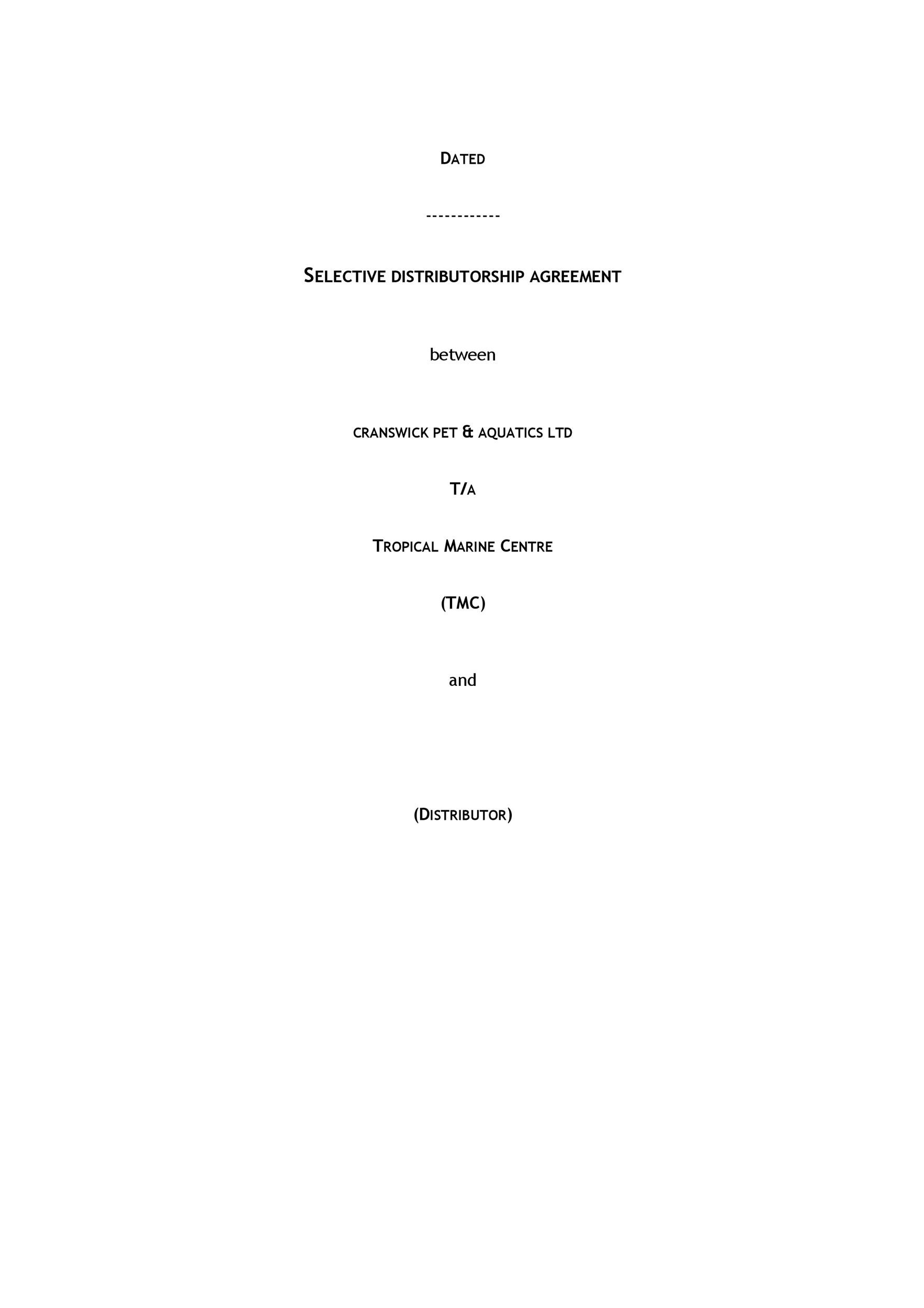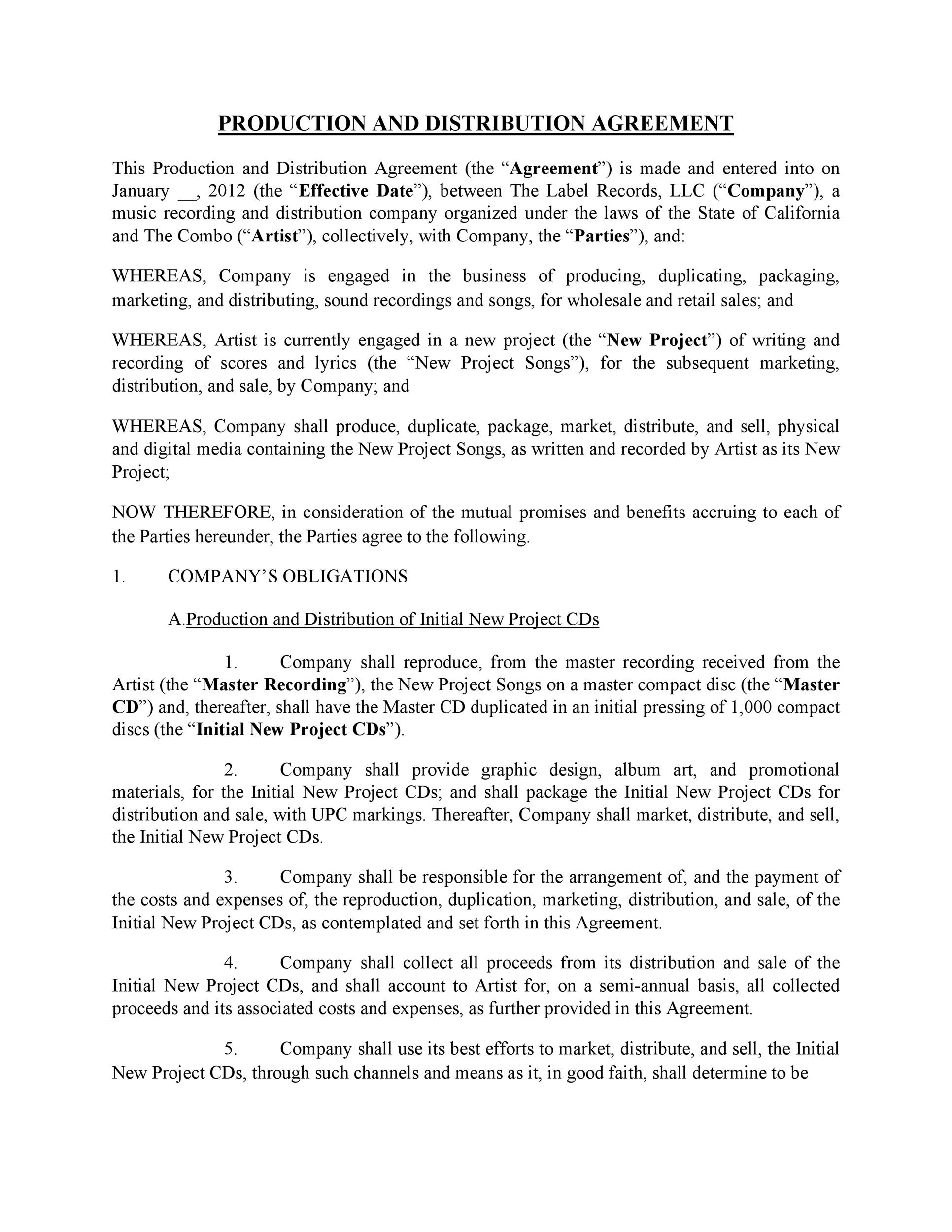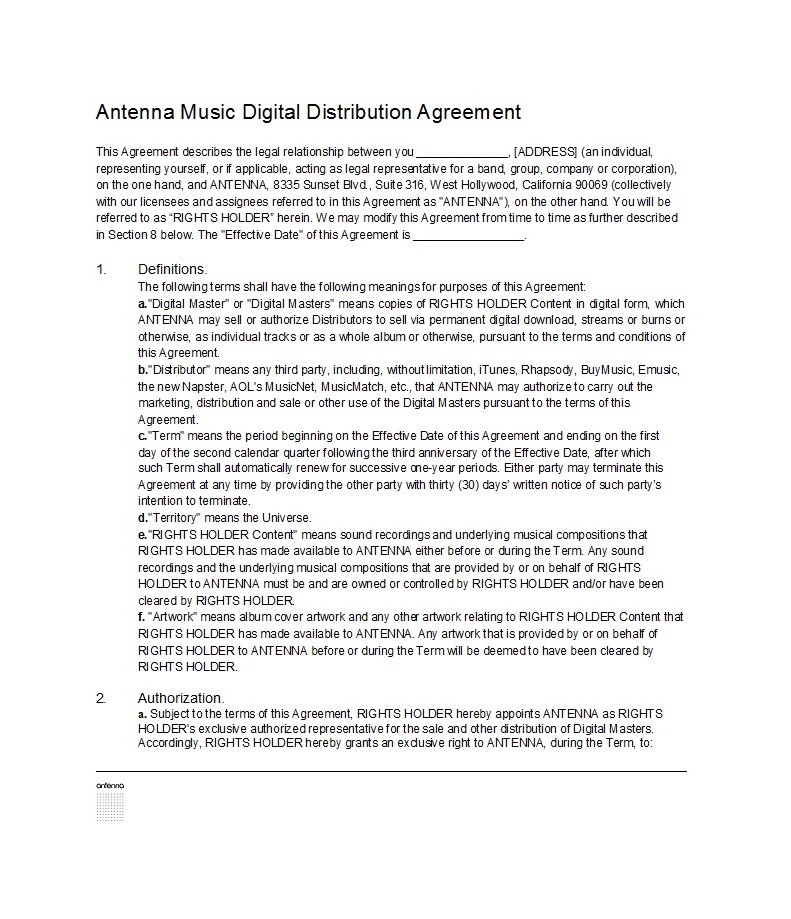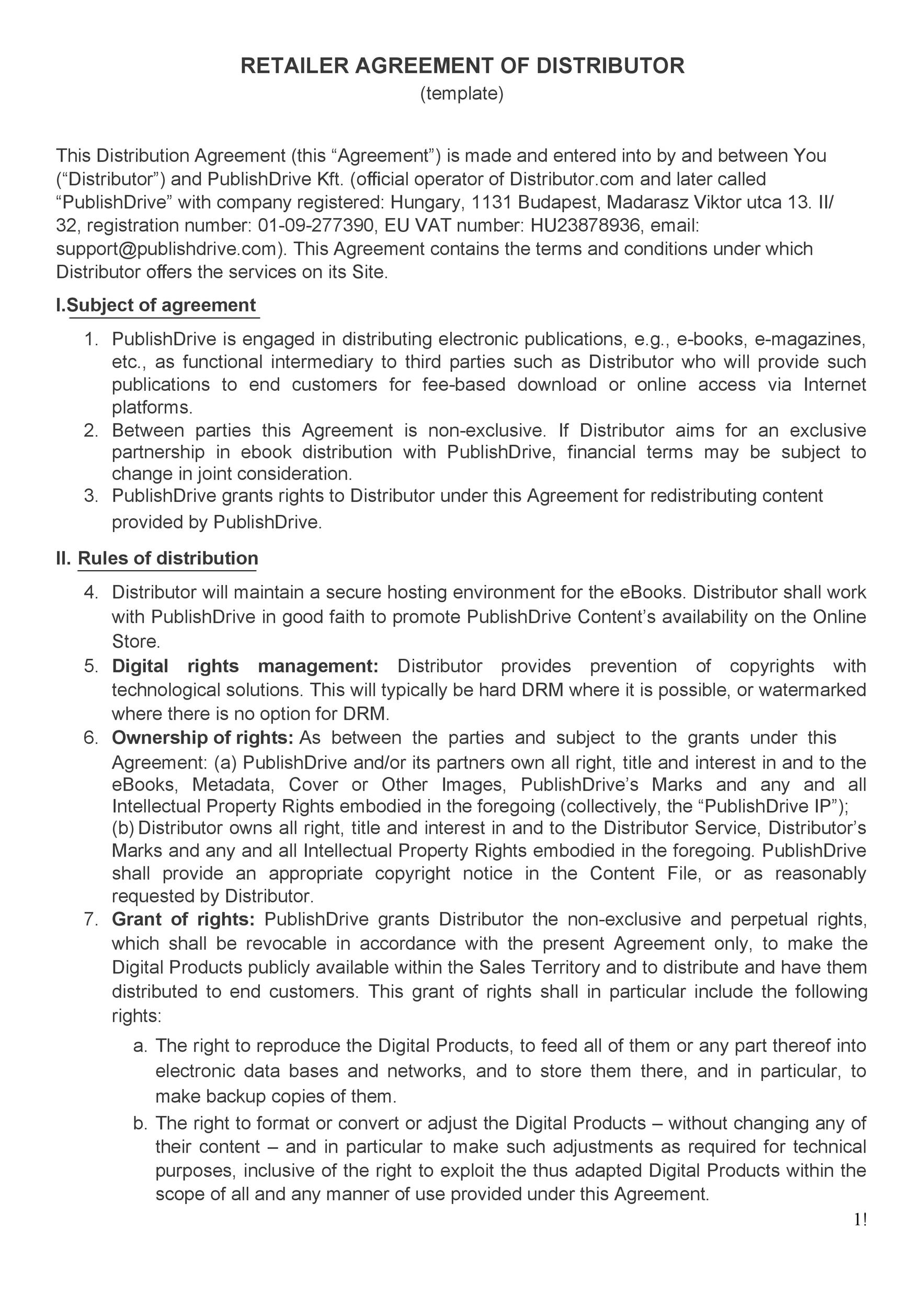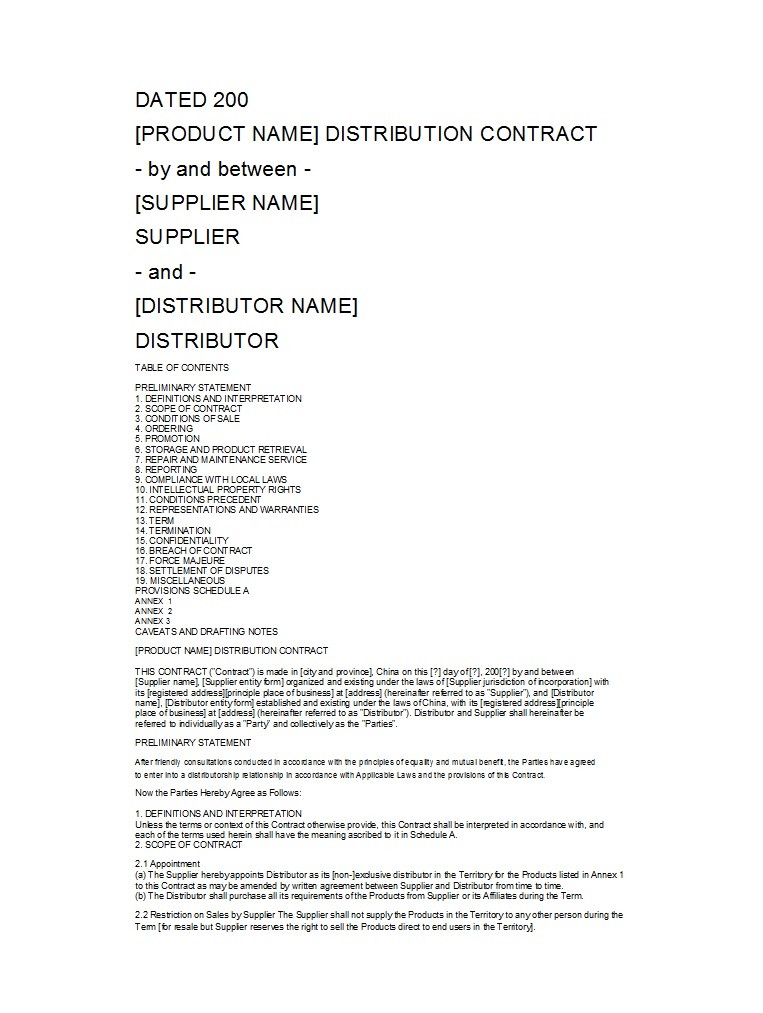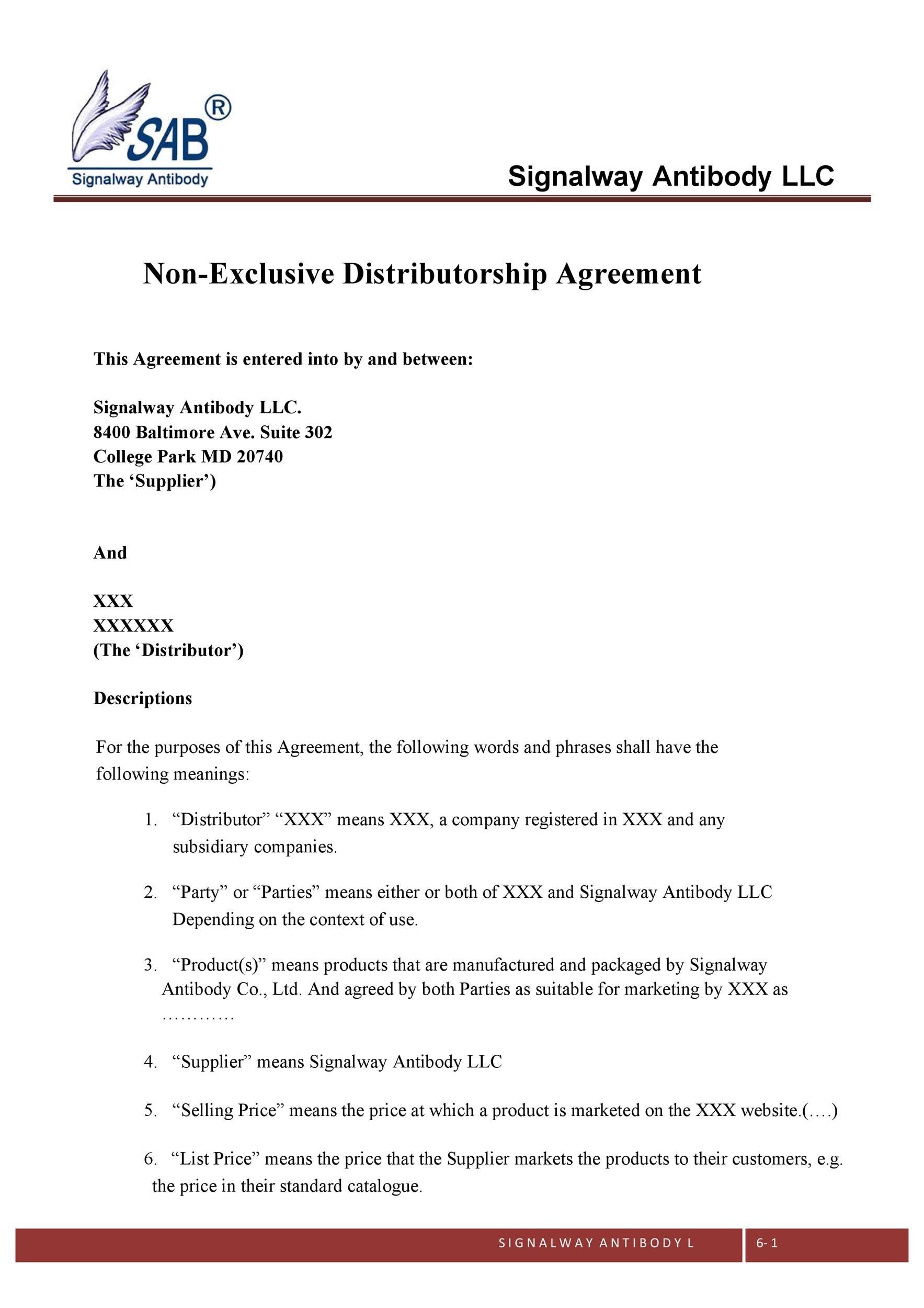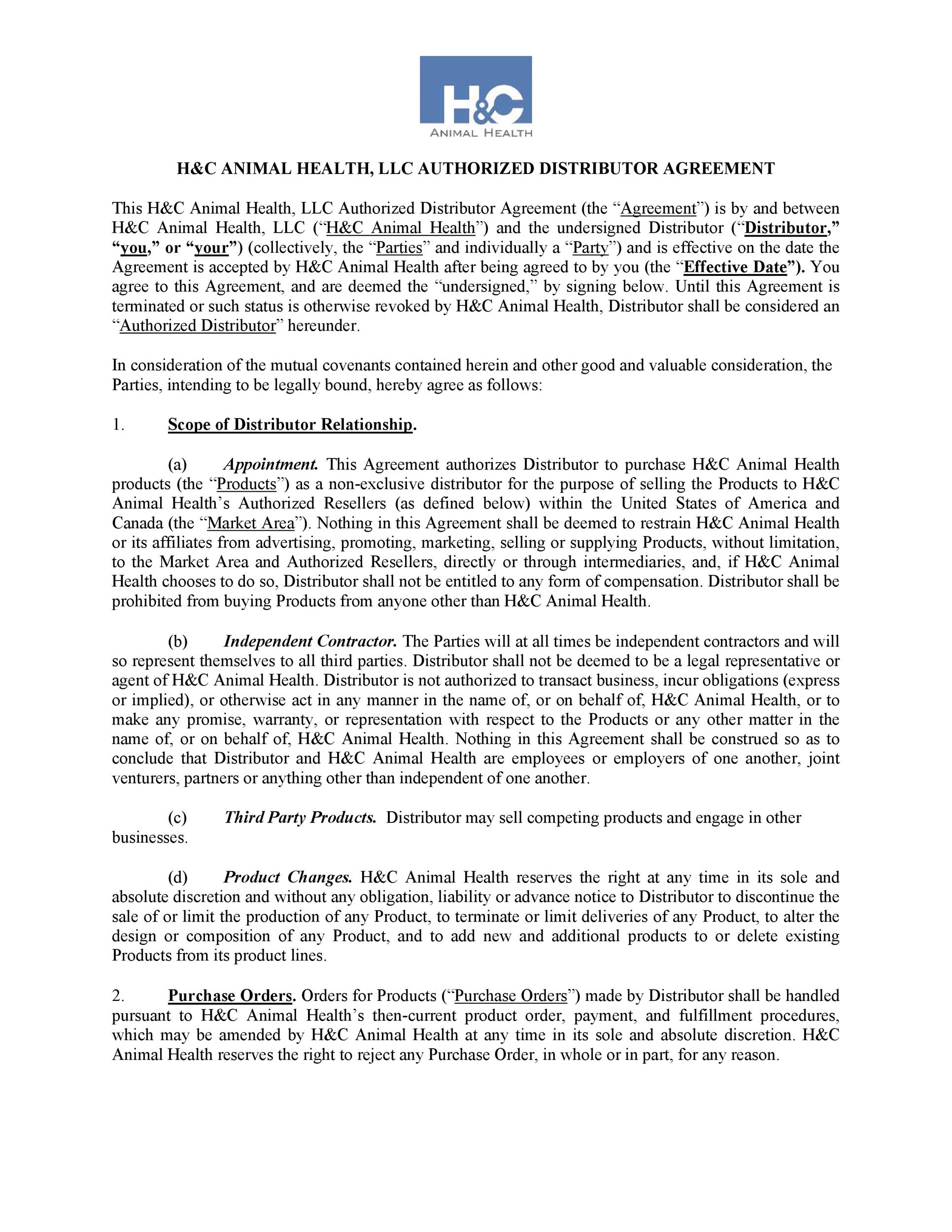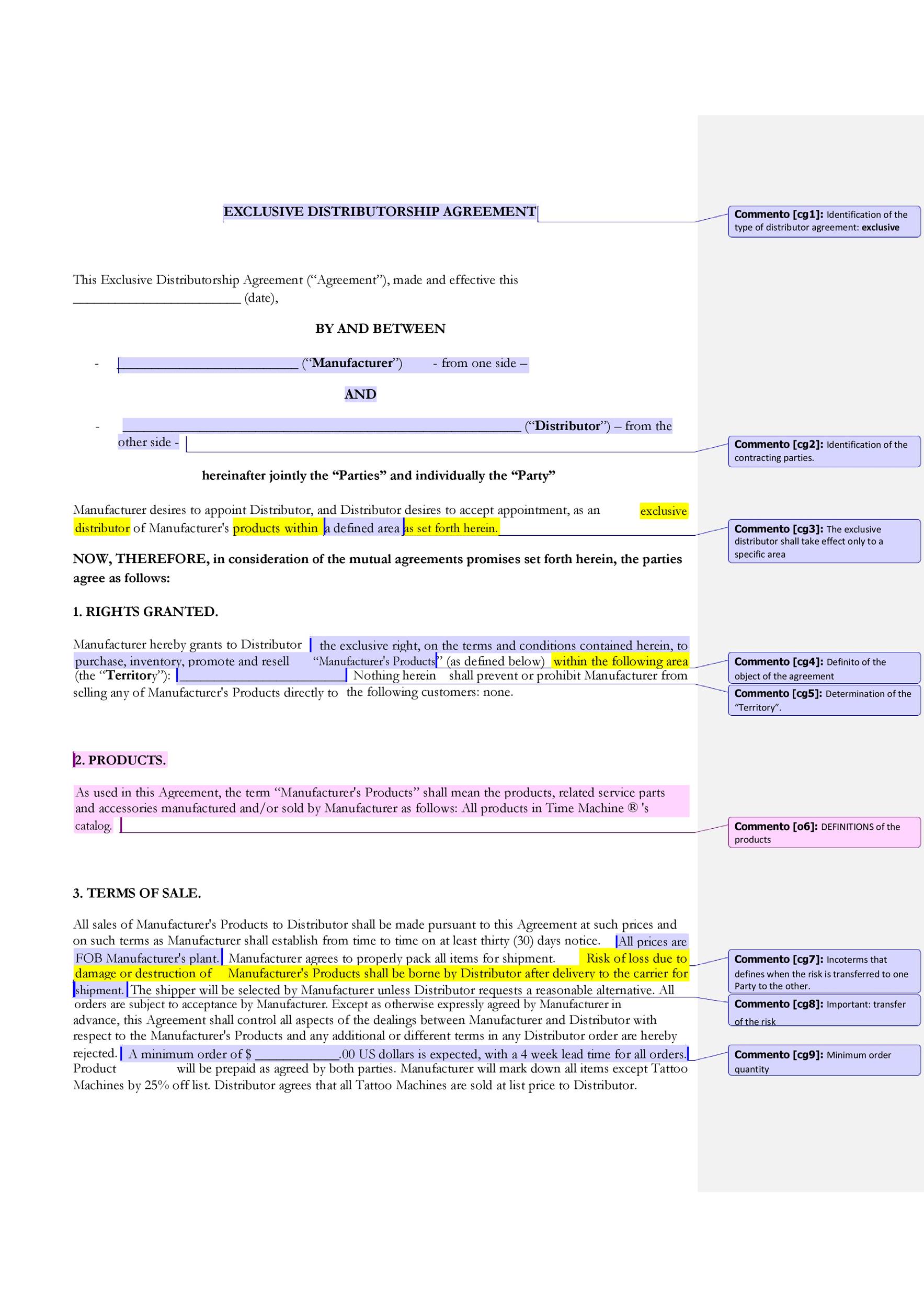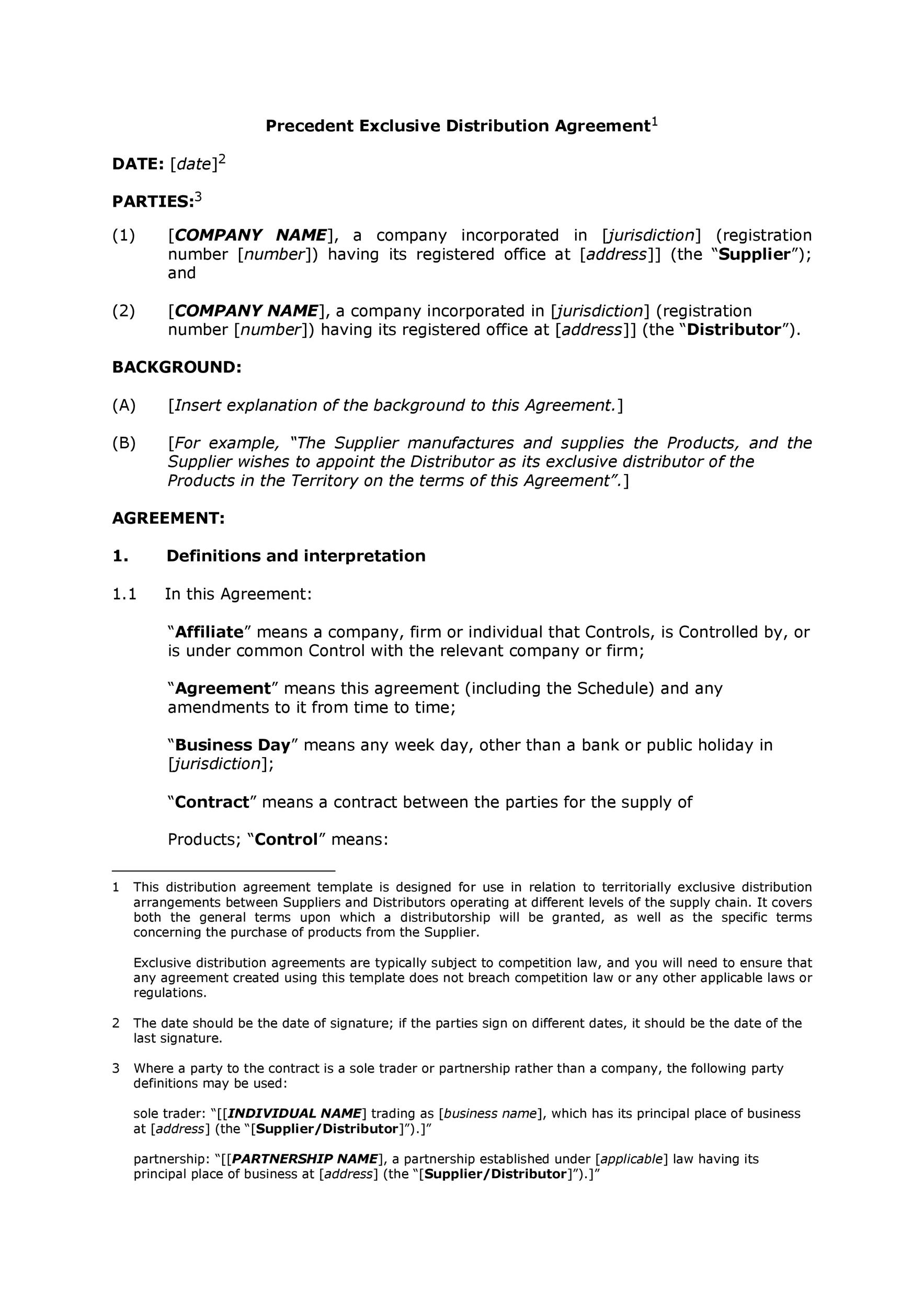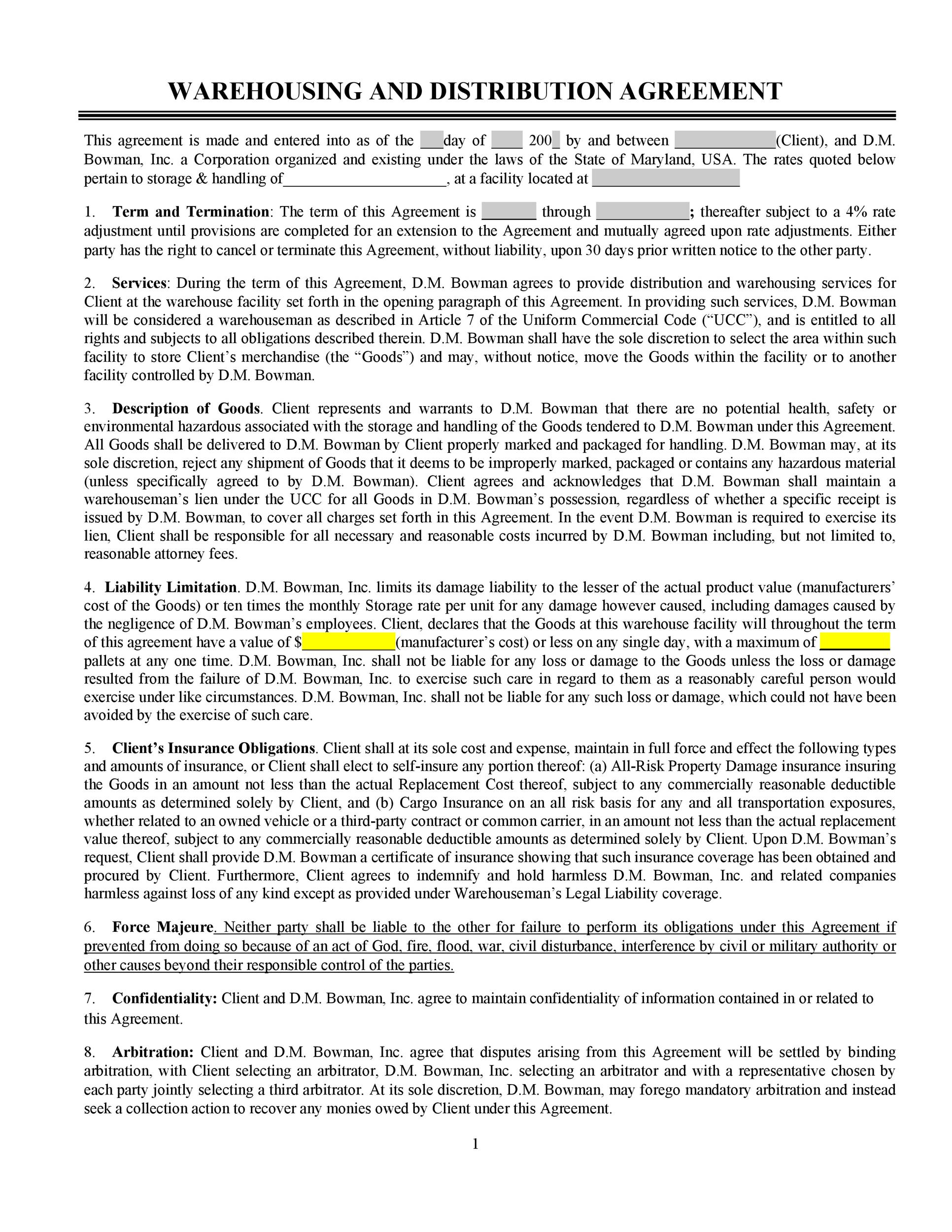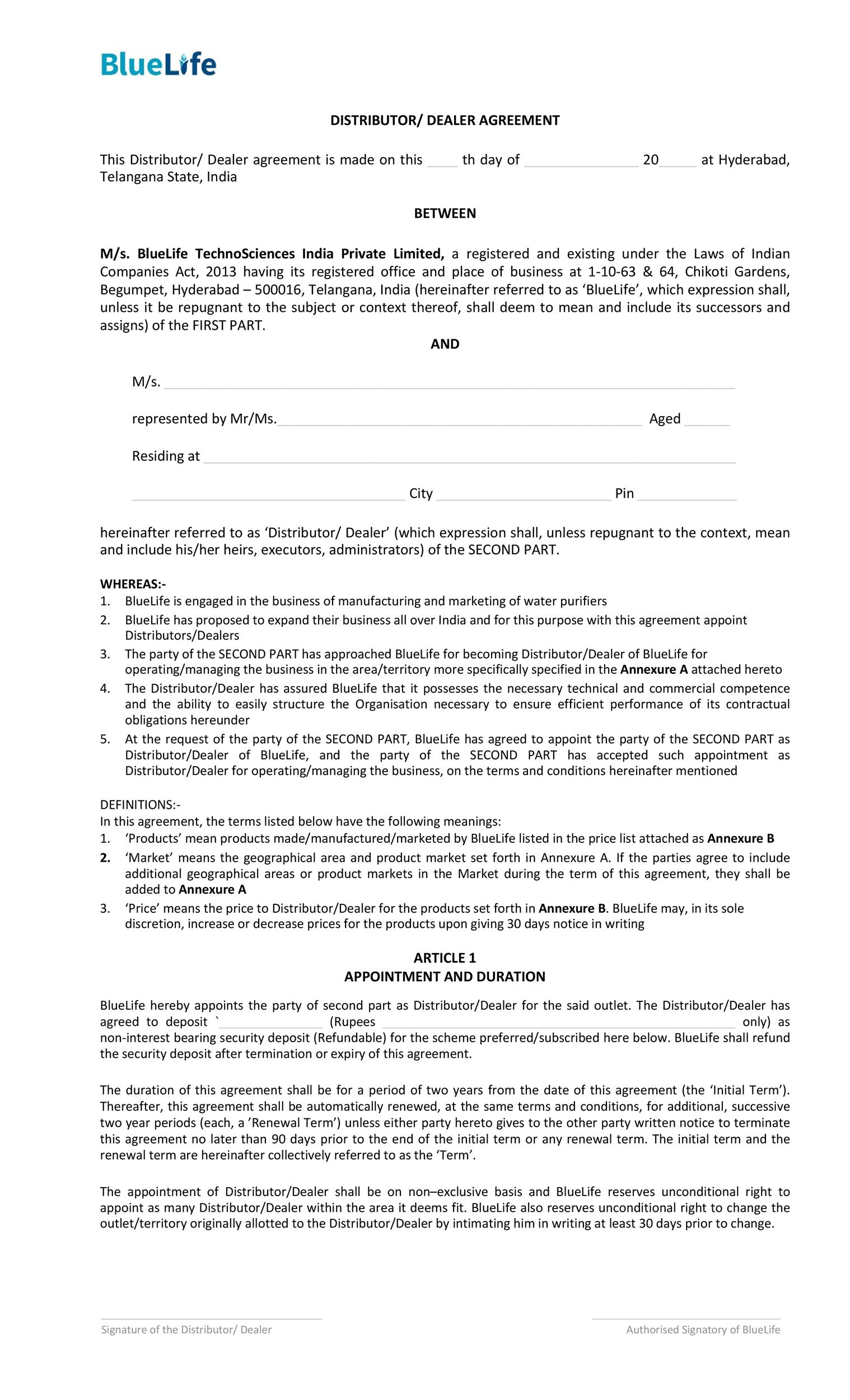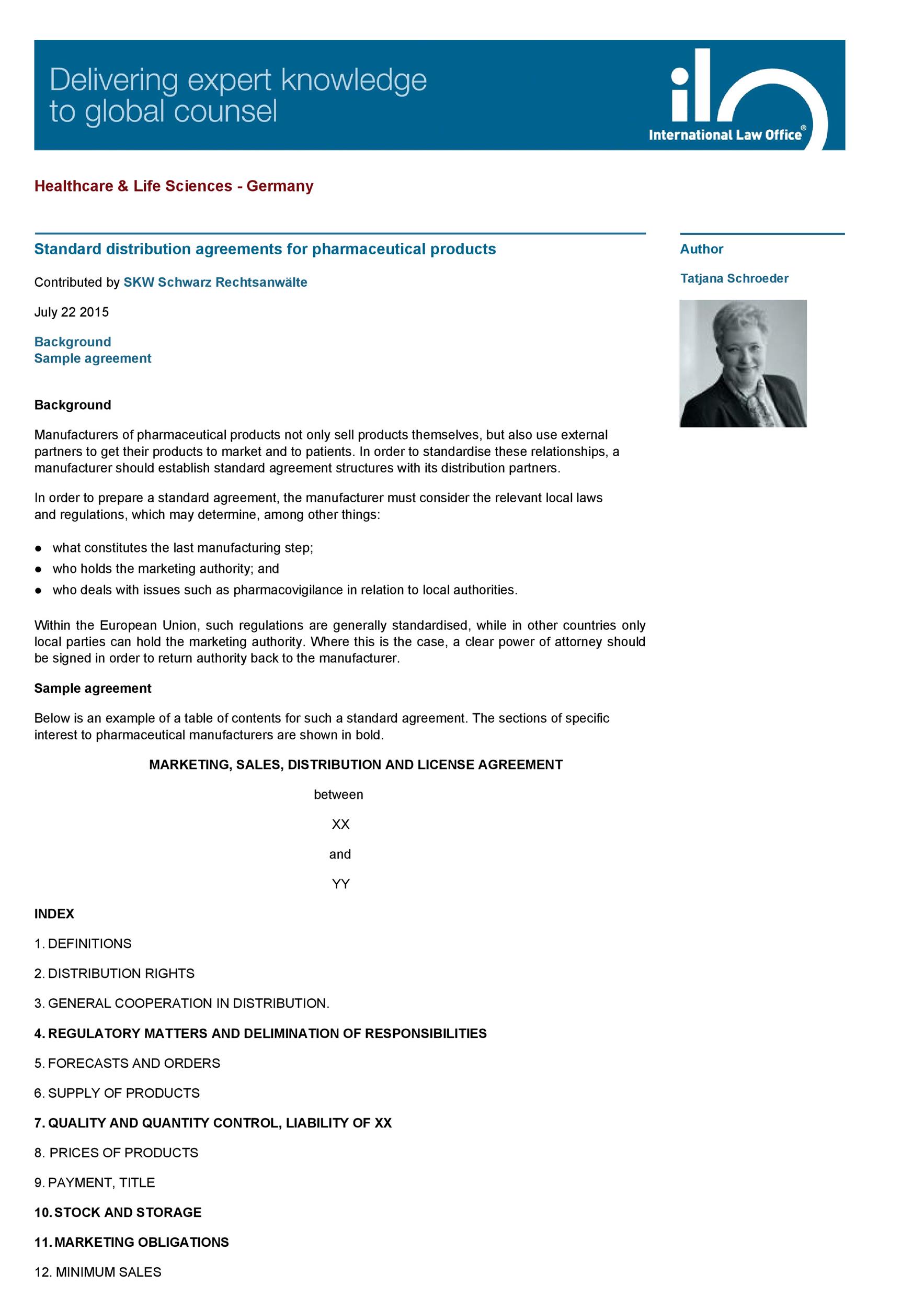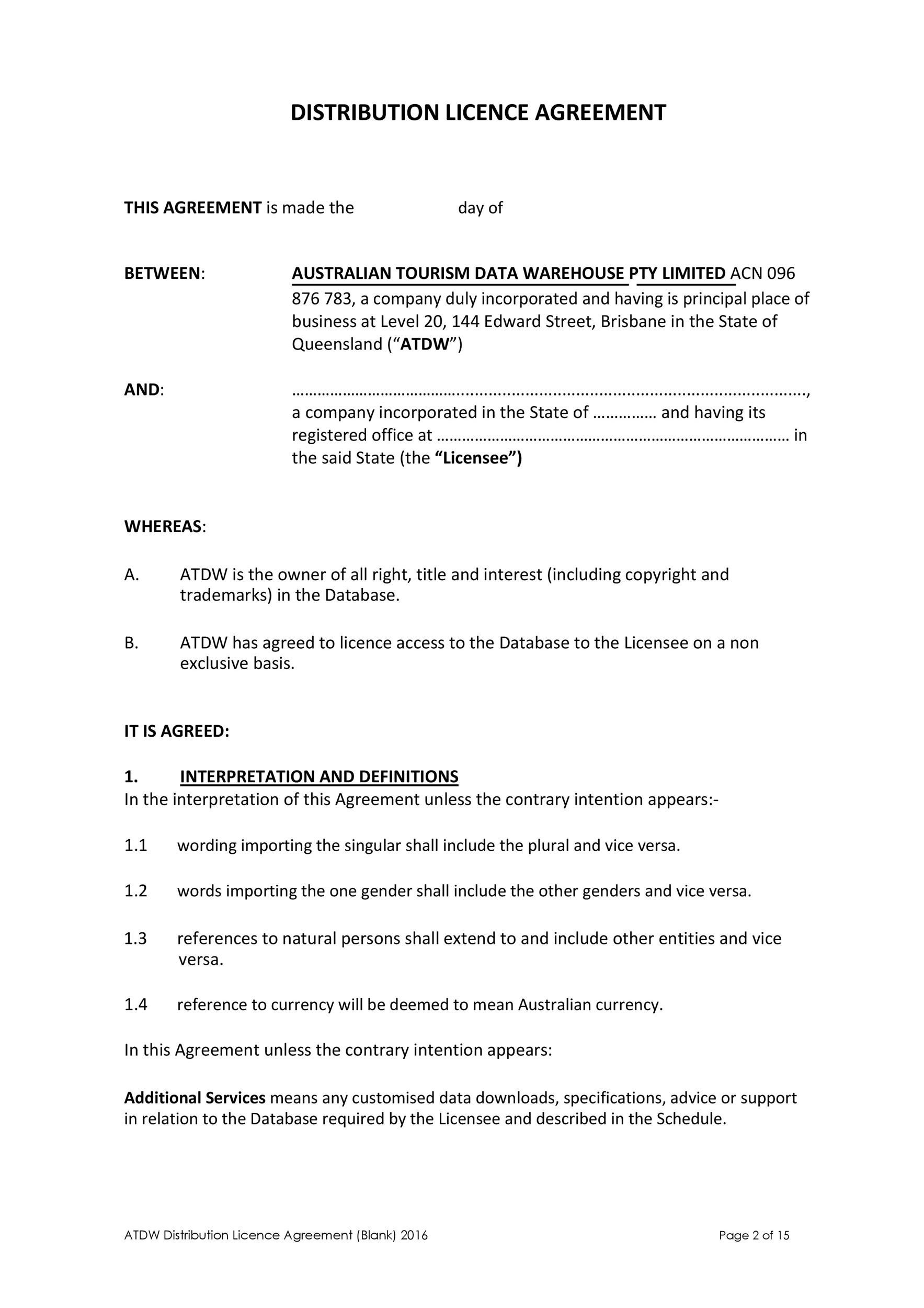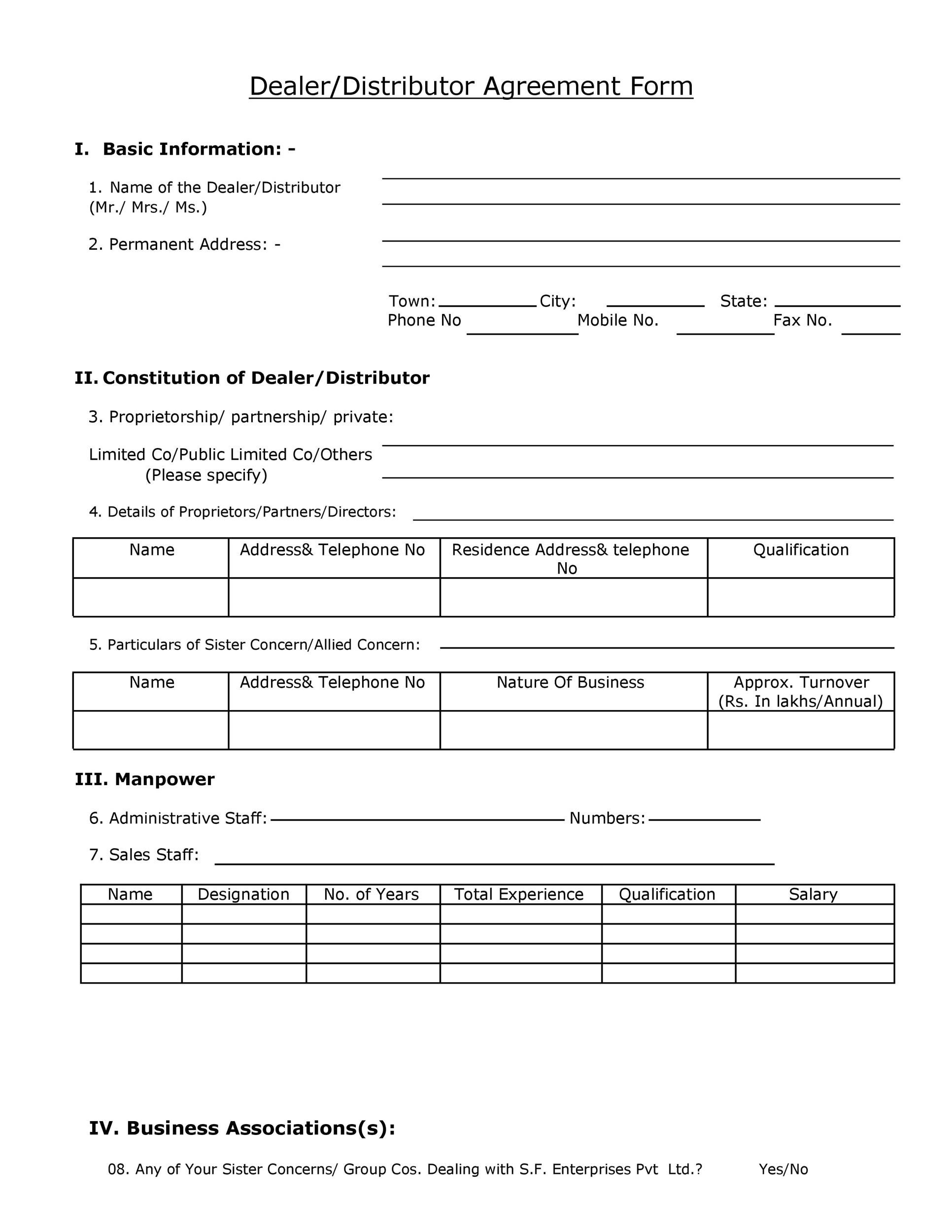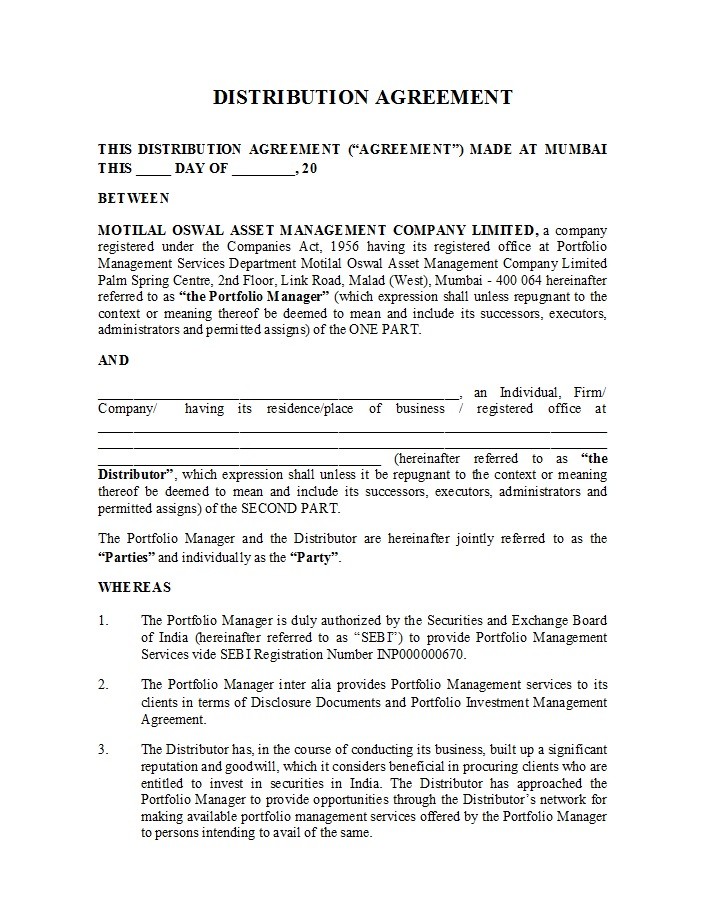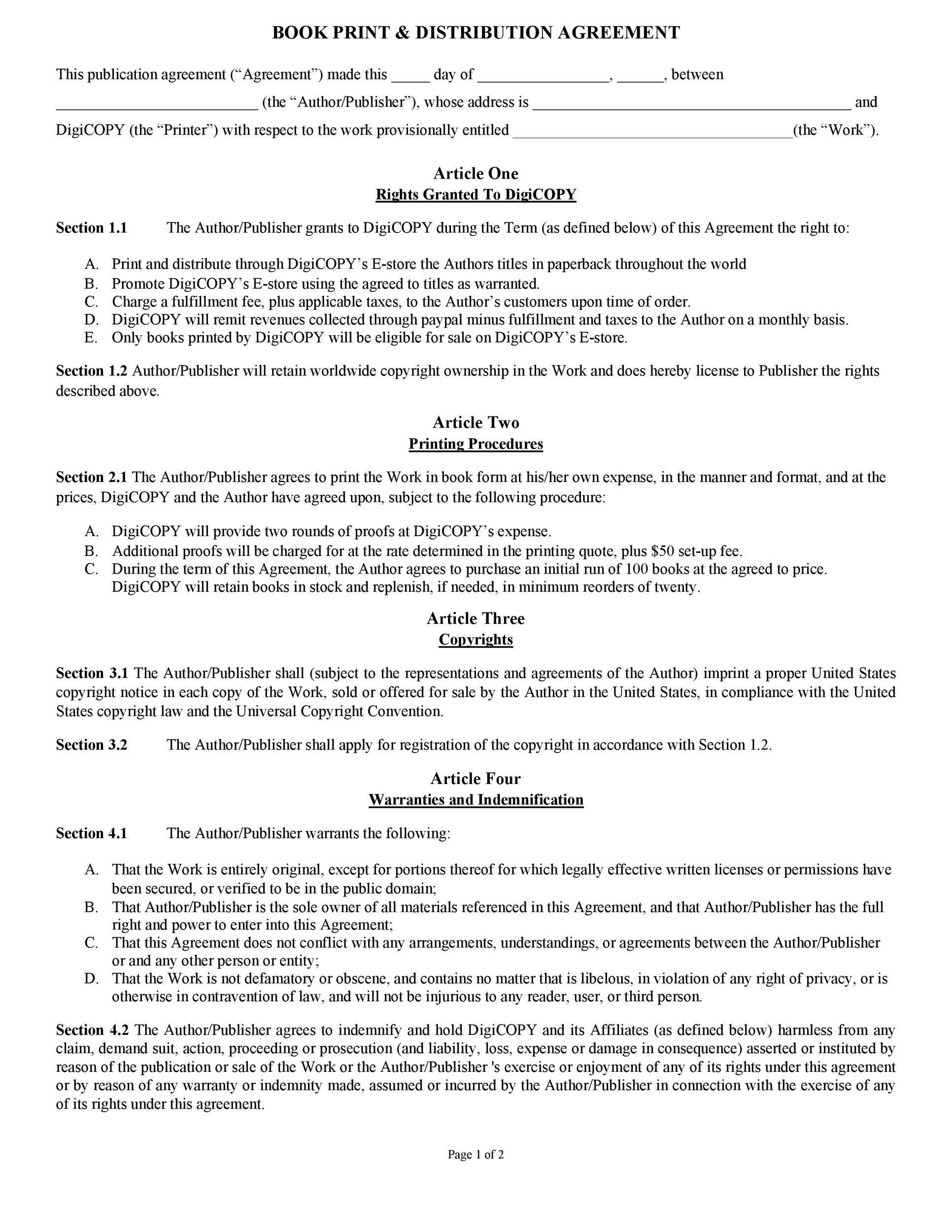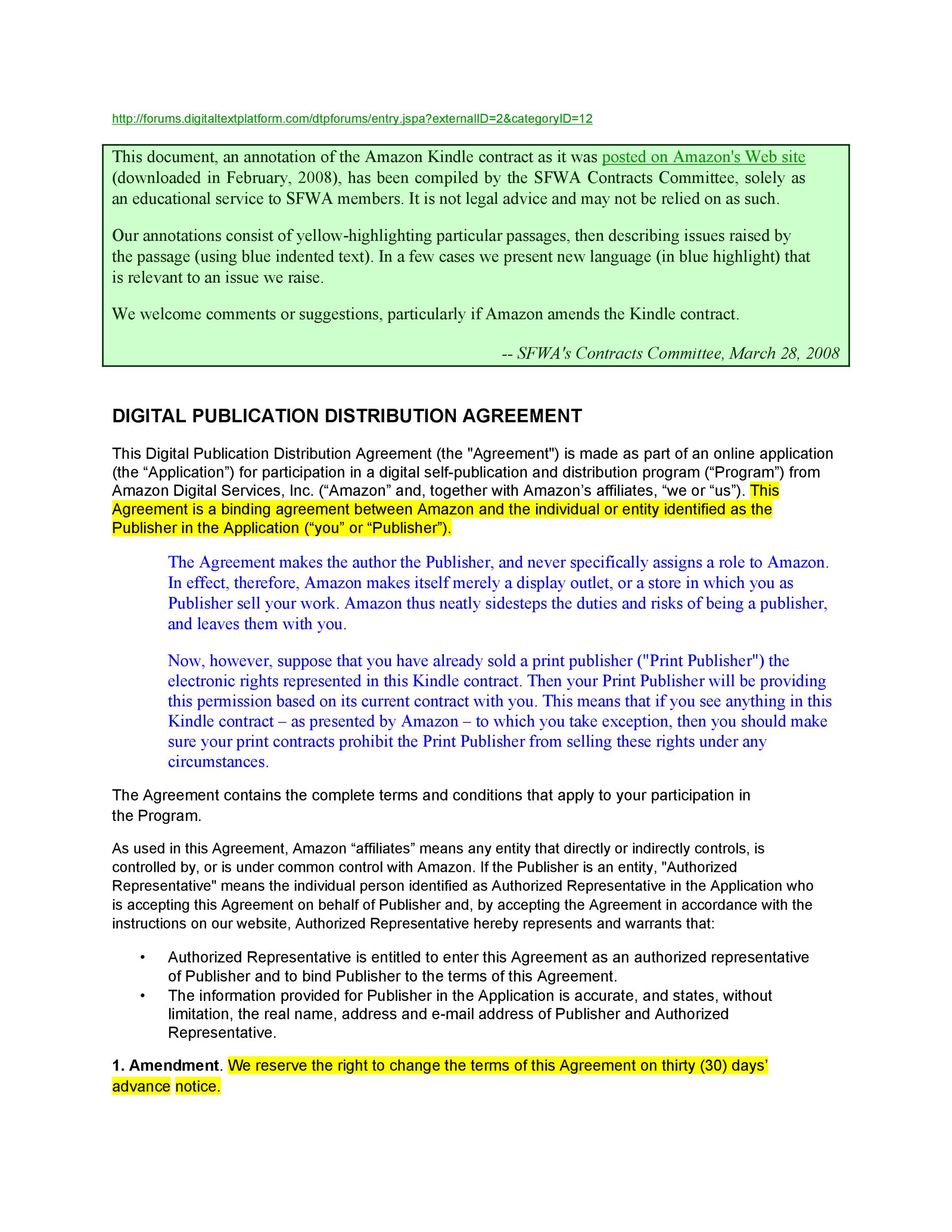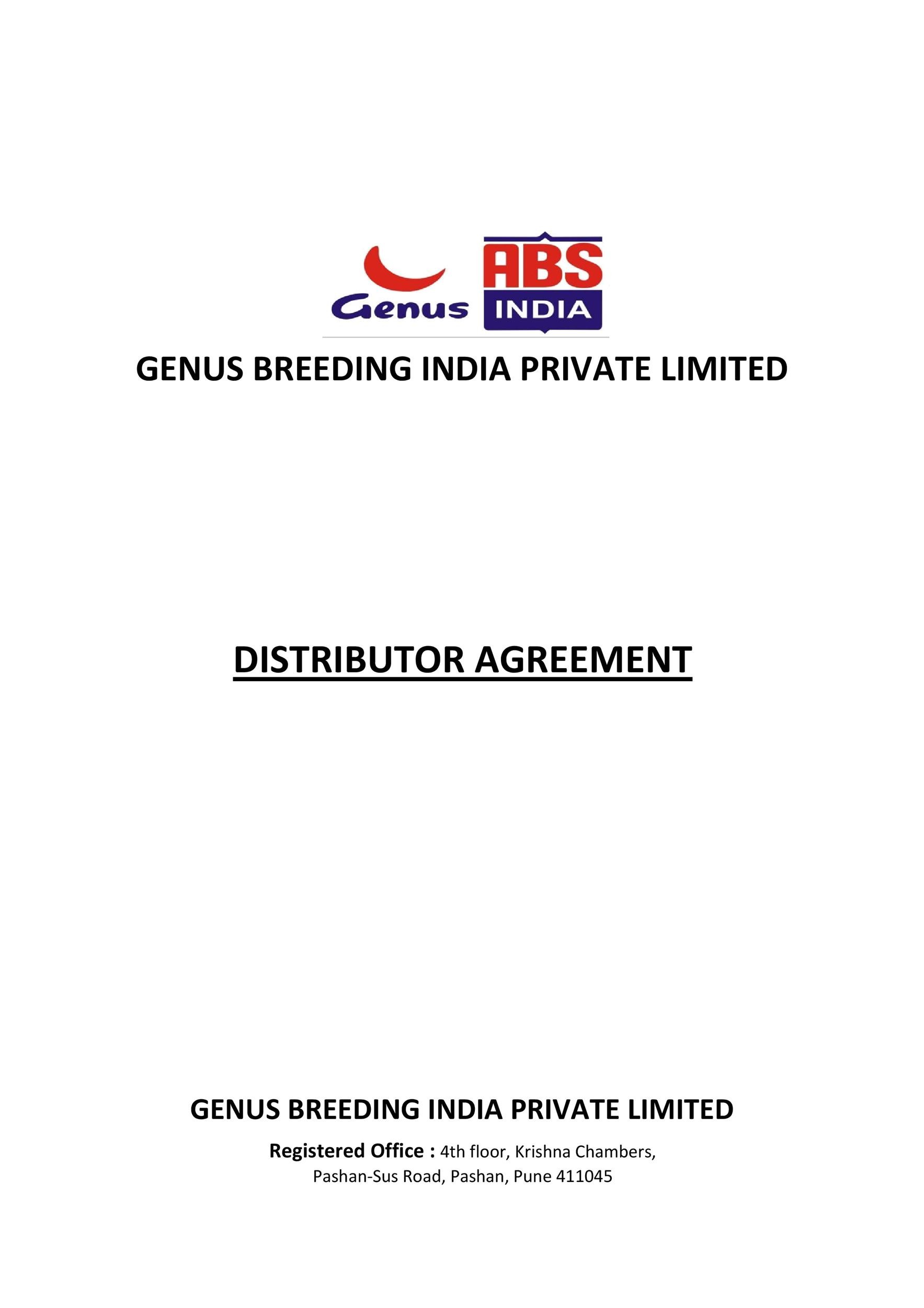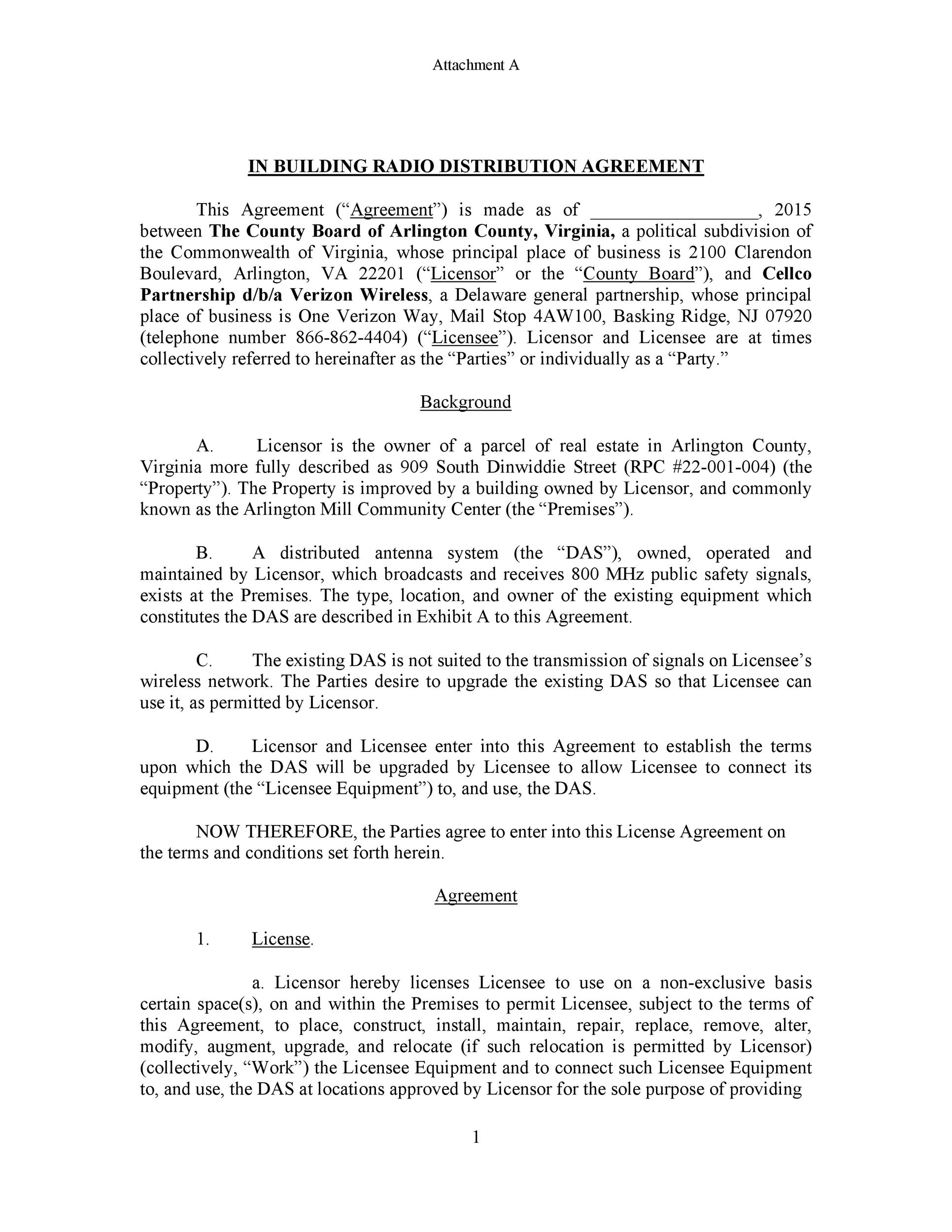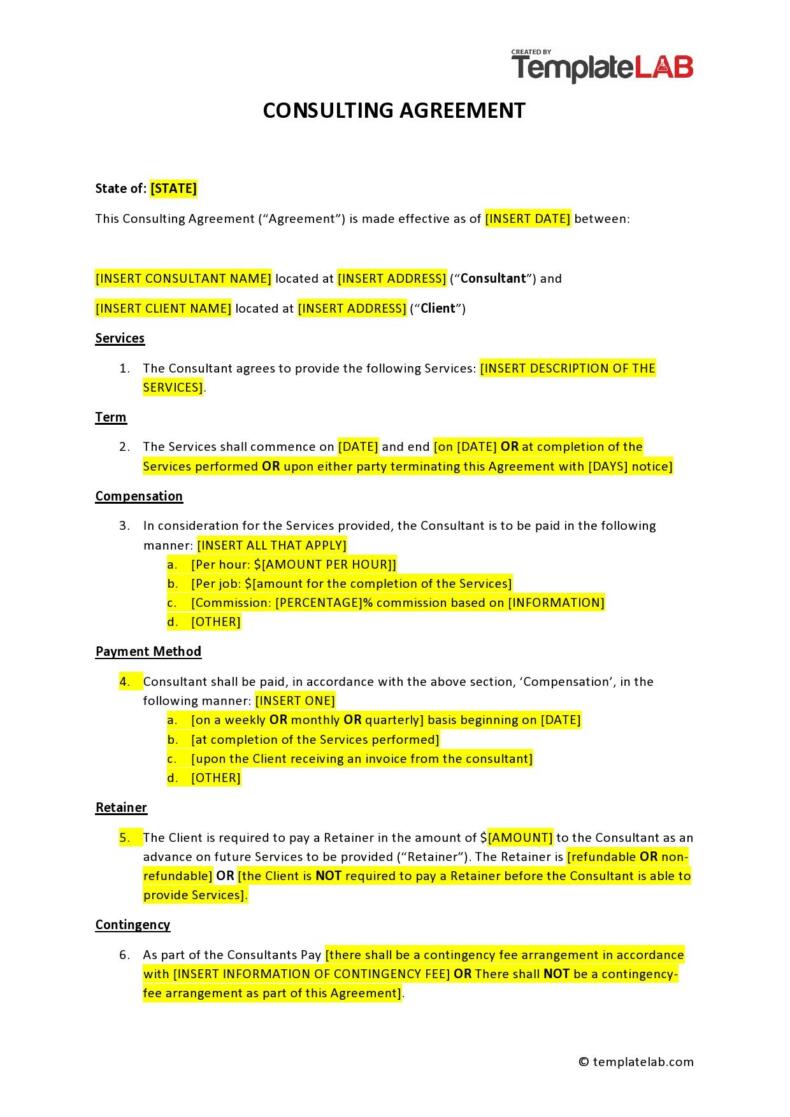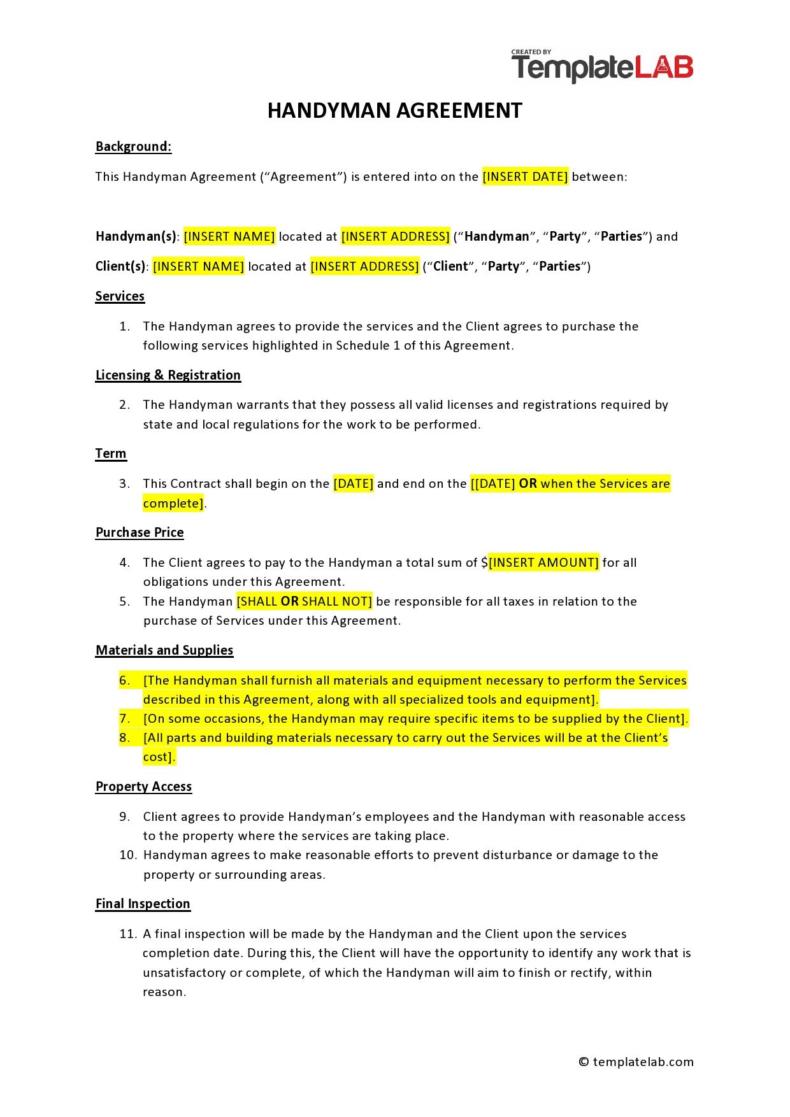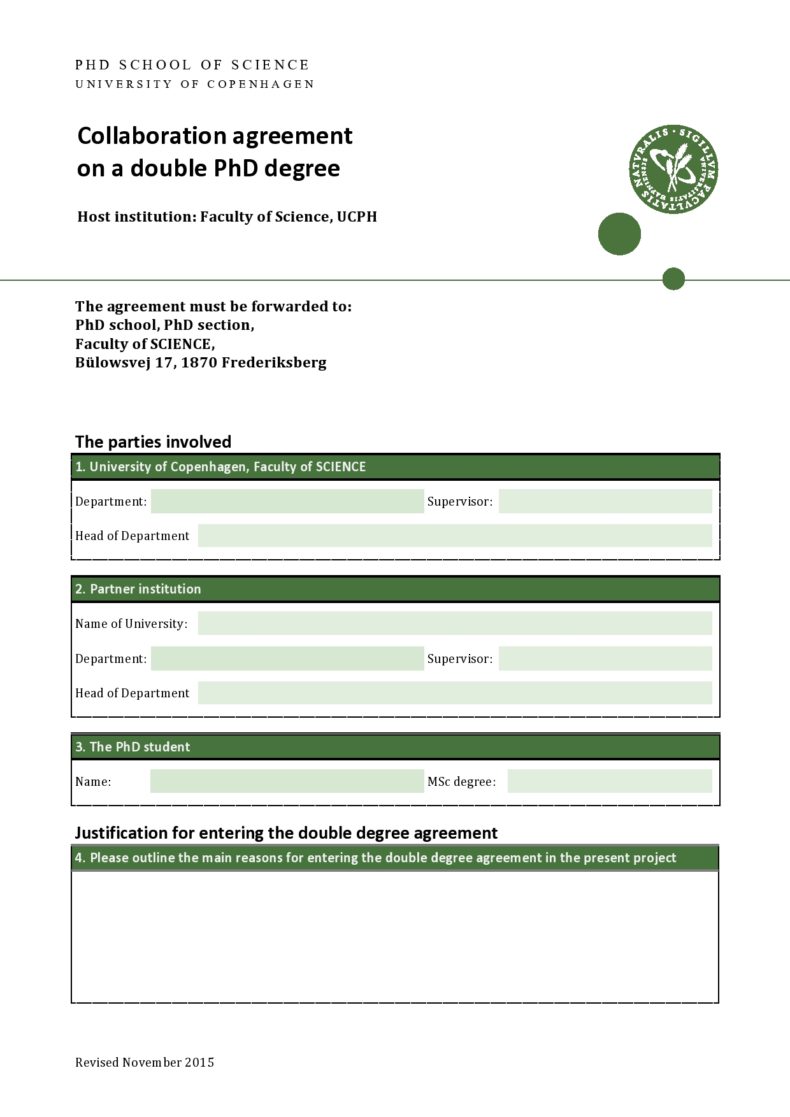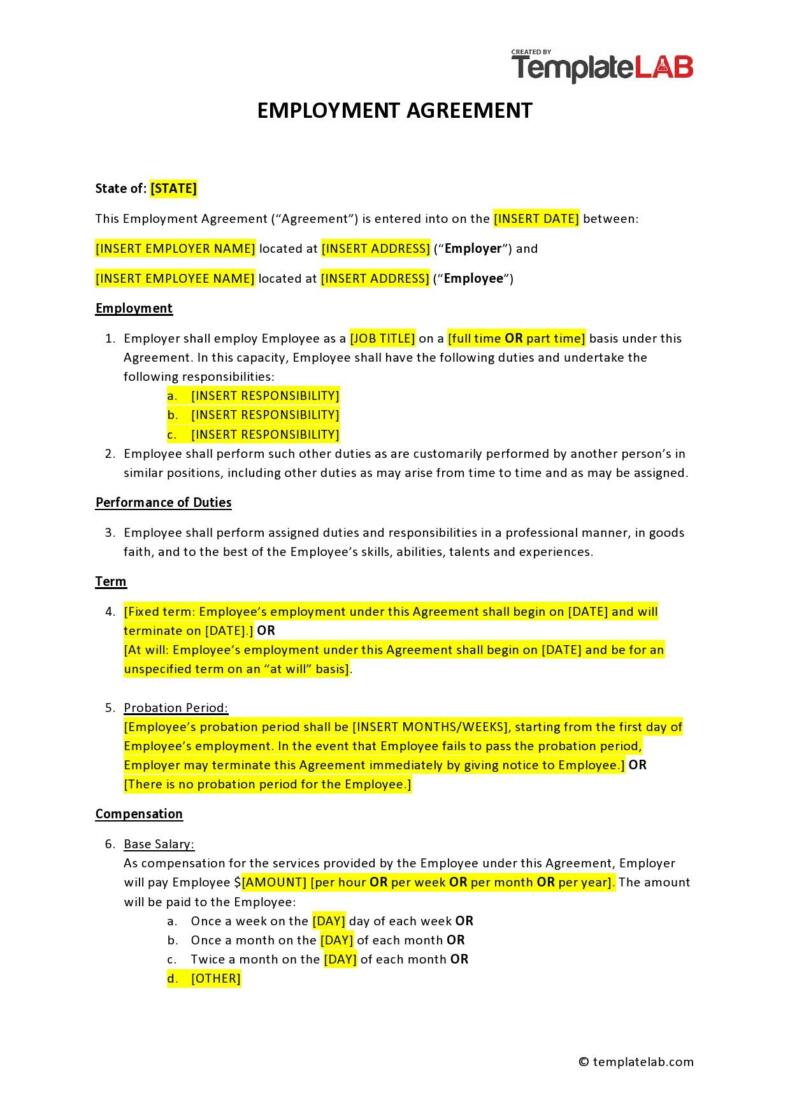Distribution, though unsung, is the lifeline of many companies and enterprises. It’s one of the reasons we can buy iPhones from anywhere in the United States even though they are made in China, and the main reason your favourite brand of chips is always fully stocked even in your county’s smallest supermarket, regardless of season and distance. Distribution is only the way manufacturers can get their goods across to sellers and ground level consumers, which means that it’s quite important. Such importance can easily be manipulated, which is how distribution agreements (more on these later) come into play.
Table of Contents
- 1 Distribution Agreement Samples
- 2 How does distribution work?
- 3 Exclusive Distribution Agreements
- 4 Distributors Vs Sales agents
- 5 What is a distribution agreement?
- 6 Distribution Agreement Templates
- 7 The Key Terms Covered in a Distribution Contract
- 8 Free Distribution Agreements
- 9 Drafting a distribution contract: Terms That Must Be Considered
- 10 Is a distributor agreement the same as a dealer agreement?
- 11 Distribution Contracts
- 12 The Benefits of having a distributor agreement
- 13 Avoiding mistakes
Distribution Agreement Samples
How does distribution work?
To put it simply, distribution works in channels. In an ideal world, it all starts with the manufacturer, who makes the goods to be distributed. The manufacturer then employs the services of a distributor to get the finished product delivered to different retailer across a specific region, with set expectations and guidelines on how to achieve them.
Distribution can also be undertaken by established dealers that purchase items directly from manufacturers and resell them to fellow dealers down the line. Even in this case, a distribution agreement is put to work early on.
Exclusive Distribution Agreements
Distributors Vs Sales agents
Distributors and sales agents are nearly one and the same, except that they are different in each’s own way. Bigger companies with cash to burn sometimes prefer to directly use sales agents to get their products in front of people and see a difference in sales. Such agents are stationed in prime locations across a region, sometimes in hundreds if it’s a large region, and their stores are stocked by the company or manufacturer itself.
Smaller companies that cannot afford this arrangement tend to use distributors more to cut costs, get more done (distributors can also offer after-sale services, especially with technological products) and still get their products noticed by customers. And when distributors are hired, a distribution contract is drafted and put to use.
What is a distribution agreement?
A distribution agreement, or distribution contract as it’s more commonly known, is essentially a document that outlines the guidelines and boundaries of a distribution partnership between two or more parties, following their expression of willingness and ability to fully participate in it. A distribution contract or agreement is legally recognized and can be used in the courts of law.
In the everyday sense, distribution contracts are regularly employed by manufacturers and distributors to rule out any uncertainty while doing business and to guarantee that supply is achieved as and when needed.
As a legal contract between two or more parties, distribution agreements act as a form of protection for the future, in that one party can sue the other should the latter fail to meet the guidelines and results agreed upon in the earlier-signed distribution contract.
Distribution Agreement Templates
The Key Terms Covered in a Distribution Contract
Every distribution agreement has a series of clauses built in, but a few are more important than others. Some of them include.
- Terms and conditions regarding supply
Between the two or more parties signatory to the agreement, there must be an understanding over what must be supplied and in what amounts. The manufacturer or initial distributors use distribution contracts to clarify their supply requirements and expectations beforehand. - Terms and conditions regarding territories covered by distributor
Distributor agreements are always clear on territorial assignment, especially since one company can employ different distributors for different regions of an area. The distribution agreement clearly outlines the region each distributor is expected to cover, and the supply guidelines that comes with it. - Duration of contract
One other guideline every distribution contract clarifies is how long the distribution contract is going to take. It can be as long as a week, months or even years, depending on the nature of the business, the distributor in question and expected returns. This duration can still be cut short though, if it doesn’t go according to plan. The terms of that also have to be listed in the agreement. - Exclusivity
Exclusivity, or the lack thereof, is very important in distribution, which is why it makes a major appearance in all distribution contracts.
An exclusive distribution agreement is that involving a party that has been awarded full, unshared distribution control over a particular product or area. A simple example of this would be Company X being hired to distribute a new soap brand on the East Coast alone.
An agreement is also considered exclusive if only one distributor is being employed to distribute all of a company’s products. A simple example of this would be Company Y working with only Distributor X when distributing its products across the United States.
Under this situation, the company agrees from the very beginning not to use any other distributor apart from its exclusive distributor within the assigned territory. Naturally, exclusive distribution agreements come with higher performance requirements for the distributors awarded and are more common within high-tech and luxury product markets.
A non-exclusive distribution agreement on the other hand, is more inclusive, allowing more than one distributor to supply products across a region. As one would expect, non-exclusive distribution arrangements are less popular with distributors.
Free Distribution Agreements
Drafting a distribution contract: Terms That Must Be Considered
In addition to the sections above, there are a few major points that must be featured in a distribution contract. They are important in a way that they make a distribution agreement what it really is. If you’re going to use an already existing distribution agreement sample, you will easily notice them in the text. We highlight a few of them below.
- Trade mark licenses and licensing, i.e. how the manufacturer’s logos and other trademarks are to be used during distribution.
- Marketing rights, i.e. the guidelines to follow so as to keep in line (legally) when marketing the products being supplied.
- Territory covered by the agreement, especially the geographical scope of the area in question with a focus on boundaries.
- Exclusivity or non-exclusivity for the distributor in question, followed by the performance requirements expected of a distributor as a result.
- Minimum performance requirements required by the manufacturer or initial distributor. The minimum is the level below which the performance would be deemed poor and unsatisfactory.
- Obligations on competition, i.e. guidelines on how to stay within the jurisdiction of the competition law of the United States while distributing the product.
- Obligations on reporting, i.e. guidelines and requirements on what must be reported in financial accounts books and more.
- Termination causes and circumstances, i.e. the actions, reactions, circumstances and affiliations that would result in annulment of the agreement should either party be found guilty of them.
- Termination consequences, i.e. what happens after the distribution agreement has been cancelled, such as whether or not the two parties can continue working together or not.
Is a distributor agreement the same as a dealer agreement?
No it is not. The two documents are similar in nature but due to the differing nature of the business operations of either party, the contents of their agreements end up differing. A distribution agreement covers a distributor and his/her relationship with the manufacturer or initial supplier.
The terms listed in that agreement cater only to their relationship in its uniqueness. Dealers get a unique document of their own, the dealer agreement, which fits better with their line of work, which includes buying products directly from distributors and selling them off at retailer level or as value-added resellers.
The two agreements still share some complex clauses, such as territorial rights and circumstances that cause contract termination. But unlike the distribution agreement, the dealer agreement may delve further into details such as means of payment, dealer responsibilities, delivery dates and more.
Distribution Contracts
The Benefits of having a distributor agreement
- It rules out the uncertainty associated with informal agreements
Informal distribution may be easy to create and follow, especially for smaller businesses, but by virtue of their nature and their lack of attached surety, they are easily dismissible in case of trouble or untrustworthy partners. Distribution agreements present a better, more formal take on the issue, and they guarantee certainty because of their nature. - It can be used as a legal cover when the deal goes sour
Distribution contracts are formal and legal, so when necessary, such as when one of the parties to the agreements bails on their end on of the bargain, they can always be used as evidence before the courts of law. - It forms a guideline for achieving goals for both parties
From the clauses outlined in a distribution agreement, all parties to it are expected to know what to do in order to make the expected final product. That includes guidelines on specifics such as delivery times, sales performance requirements, deadlines, profit sharing and more.
Avoiding mistakes
A distribution agreement is a legal document, which means that it must be handled with extra care. It’s important that you have a lawyer around as you sign it or as it’s being drafted so that you avoid making any mistakes.

